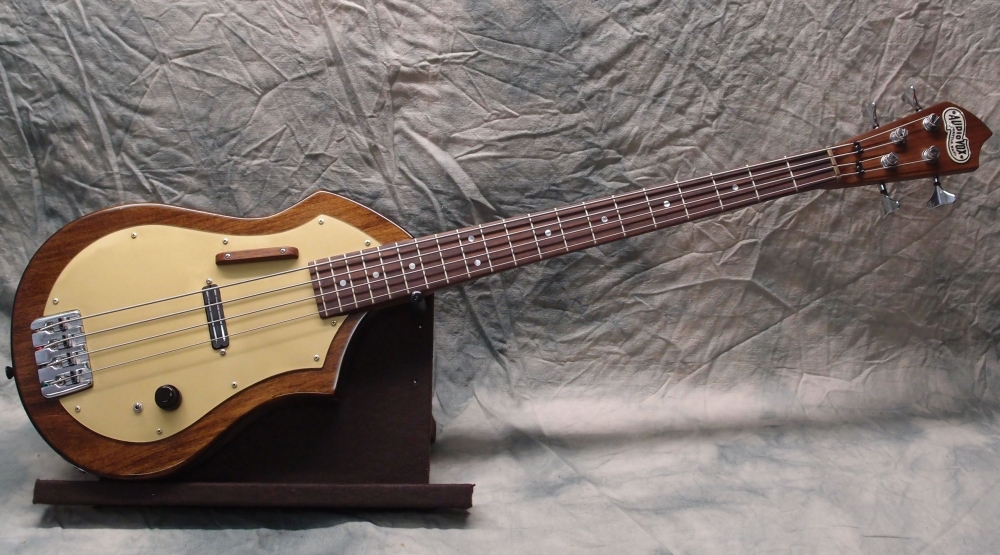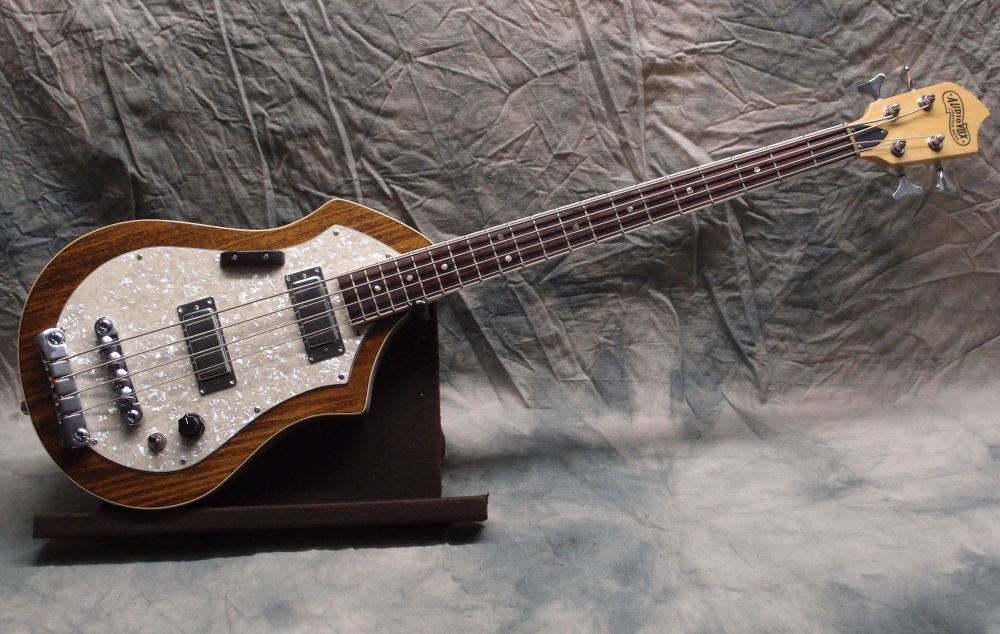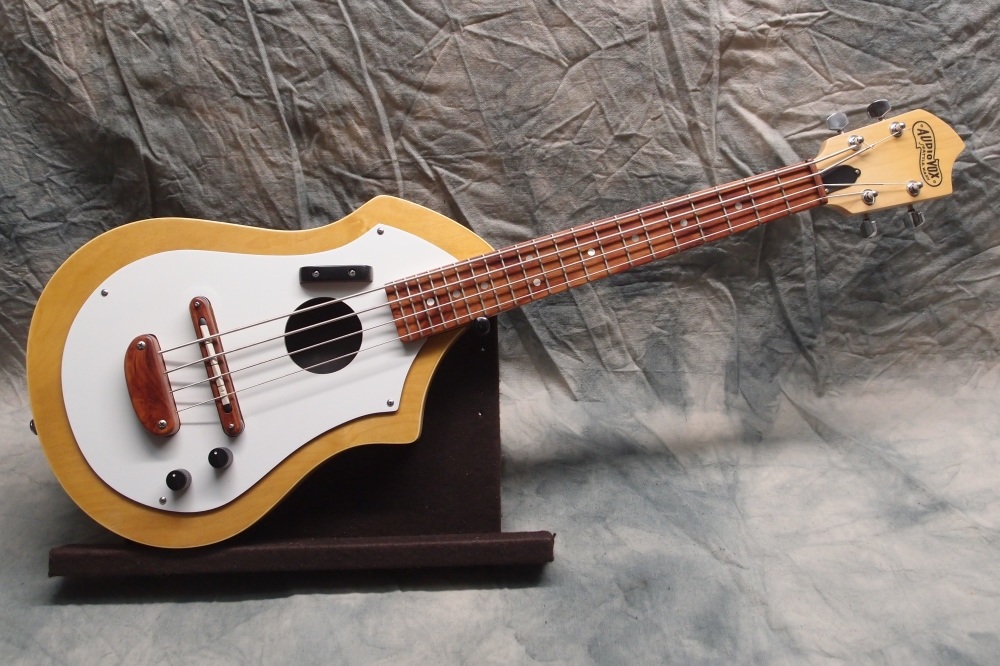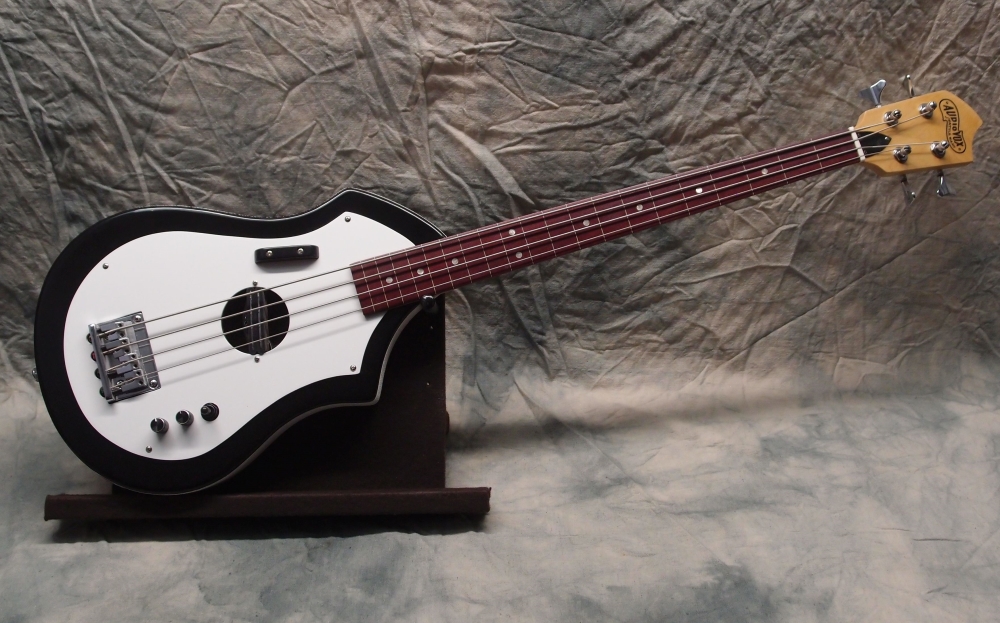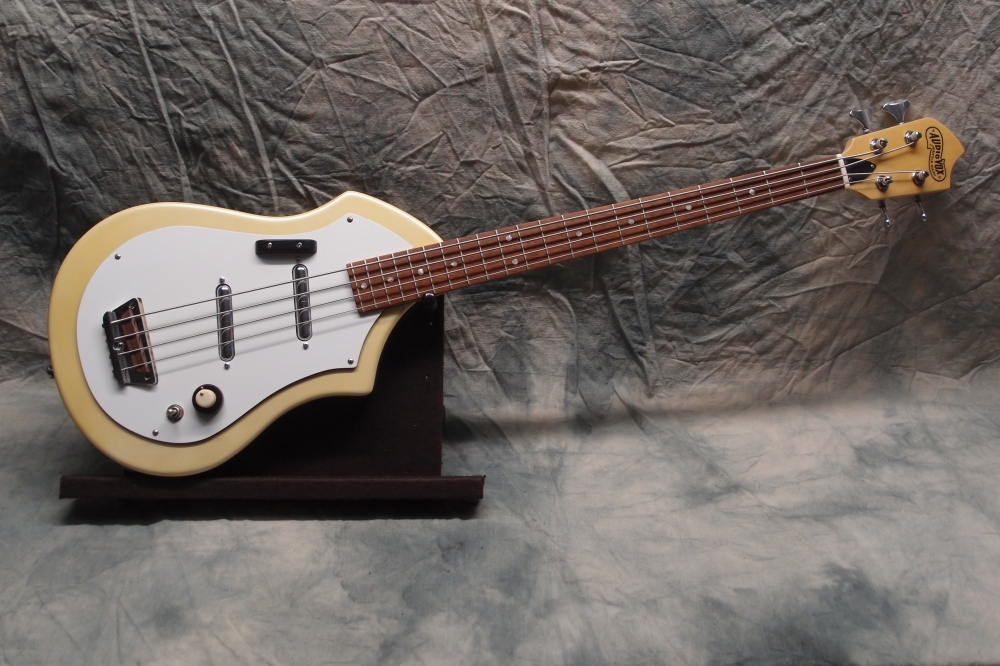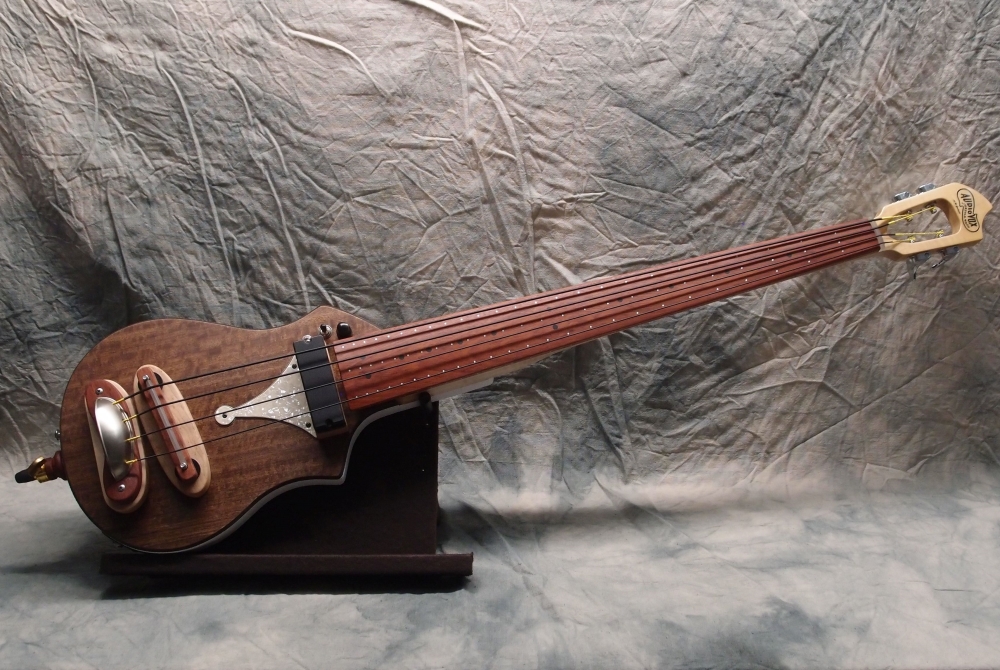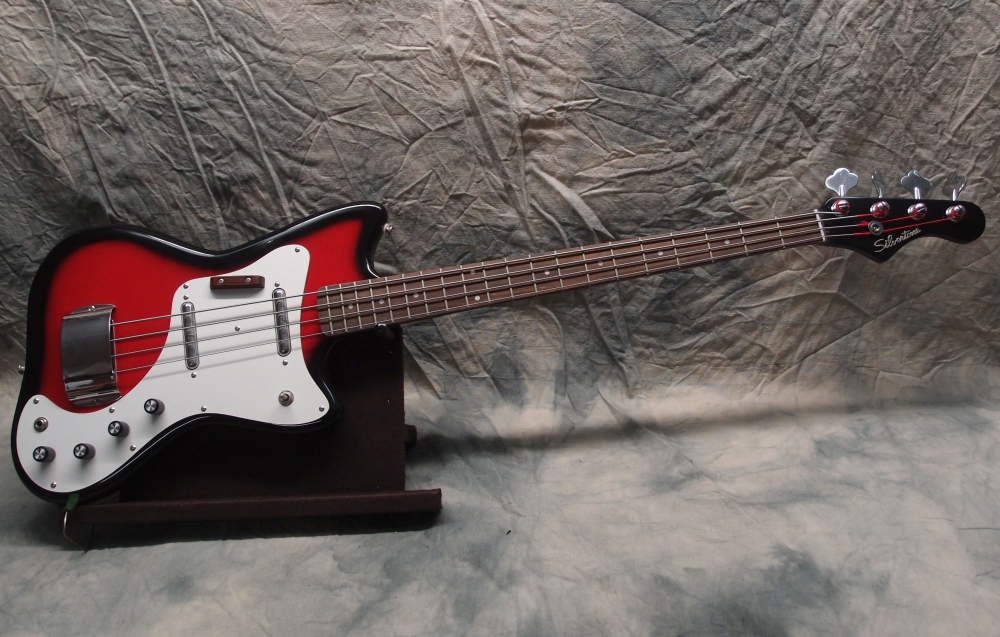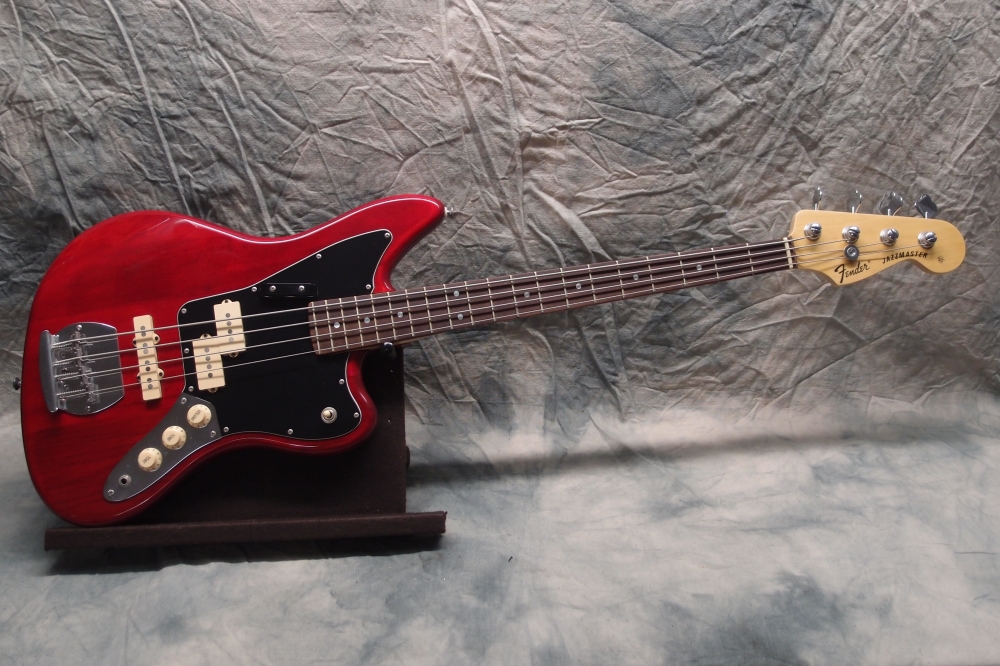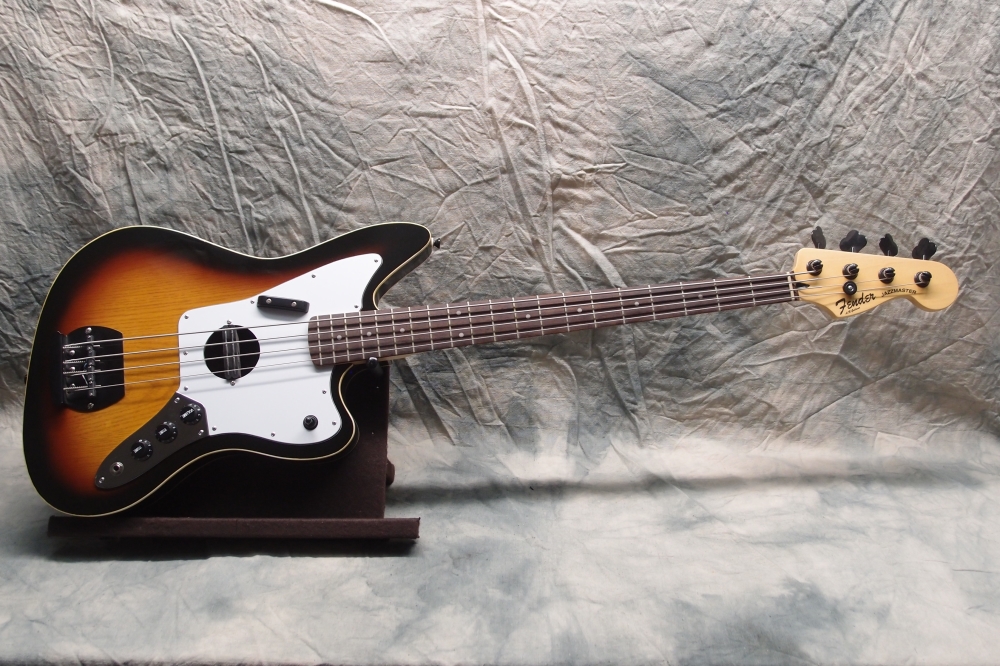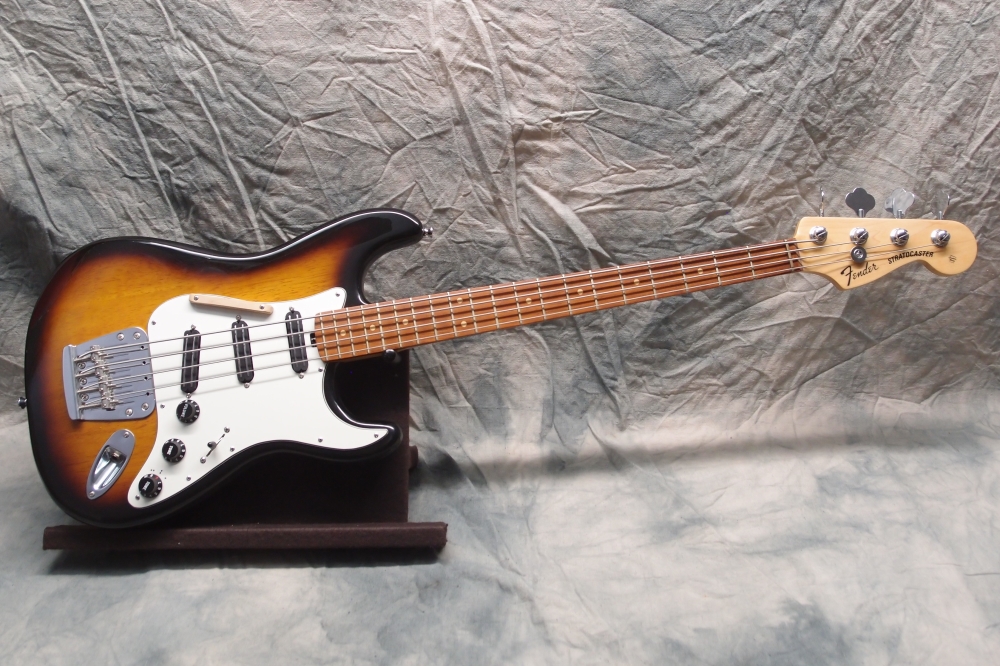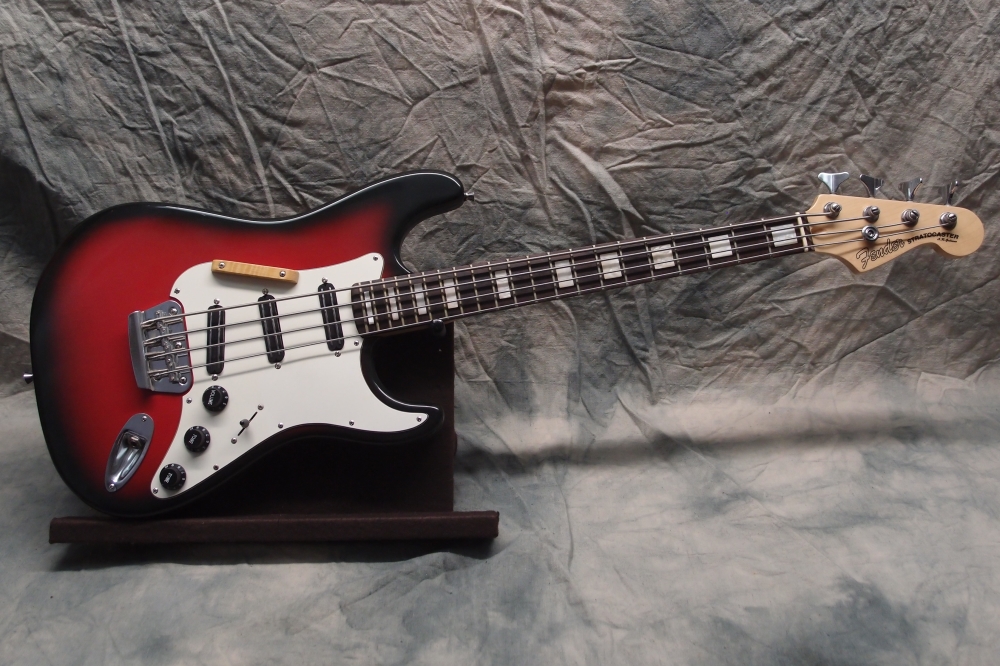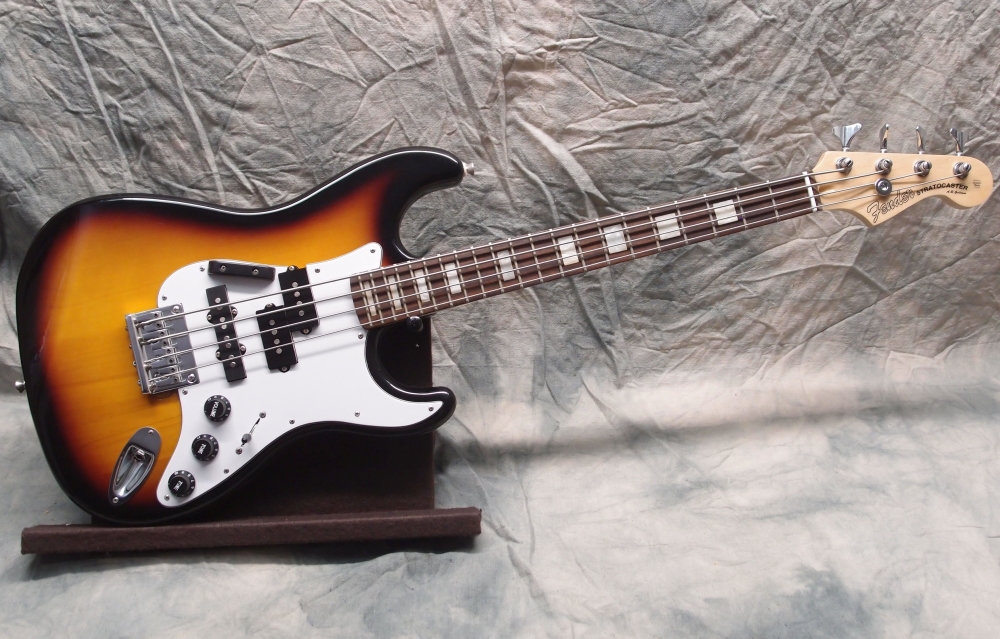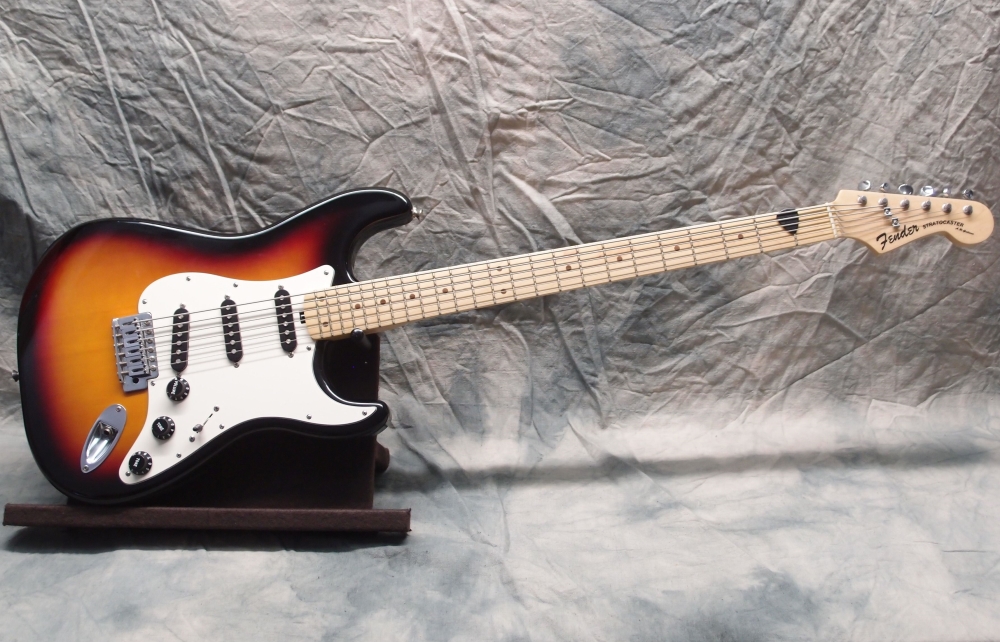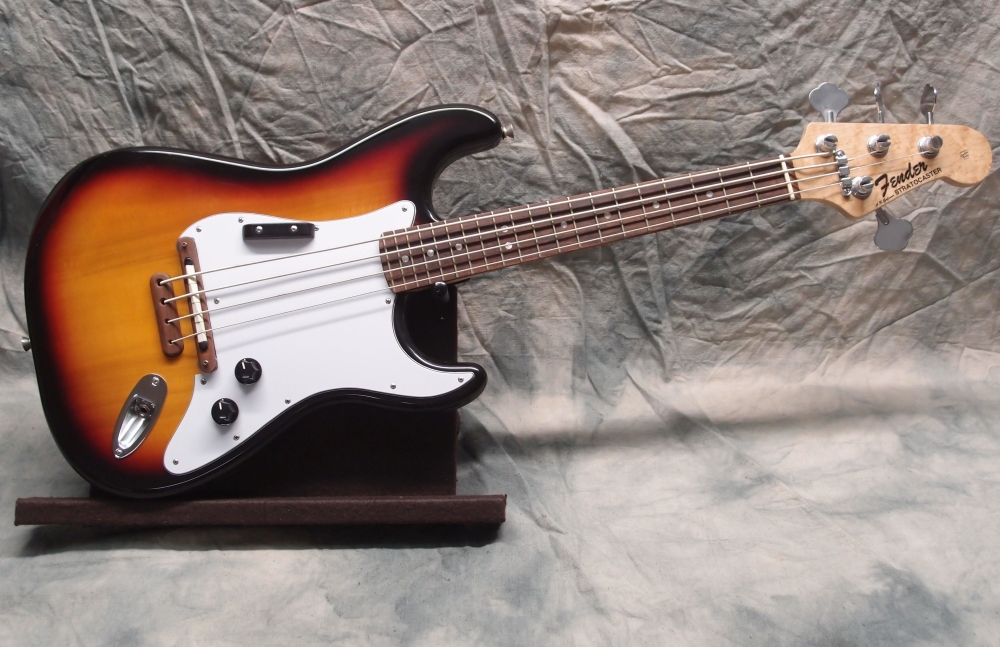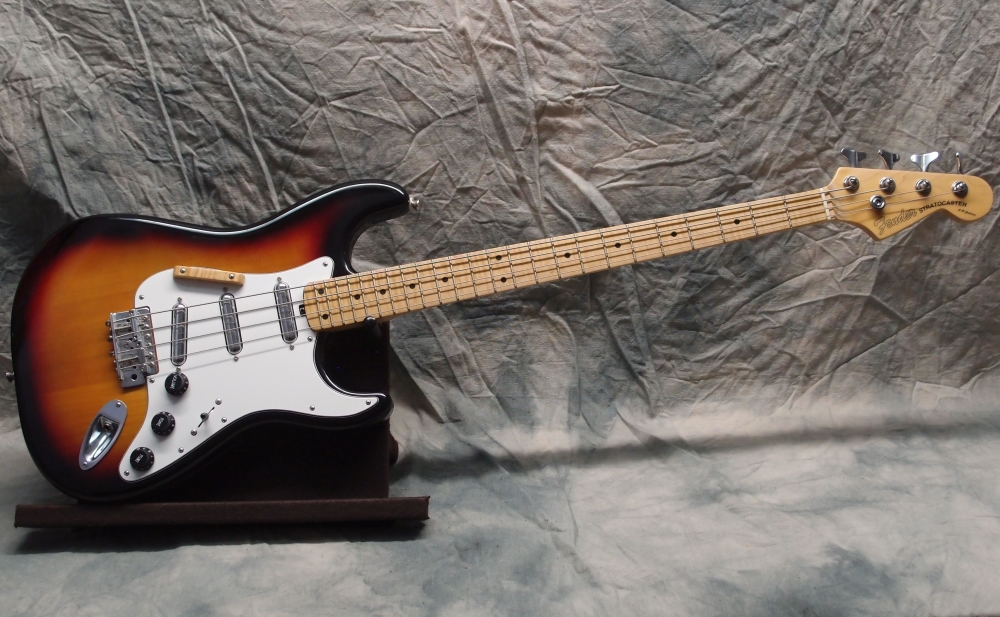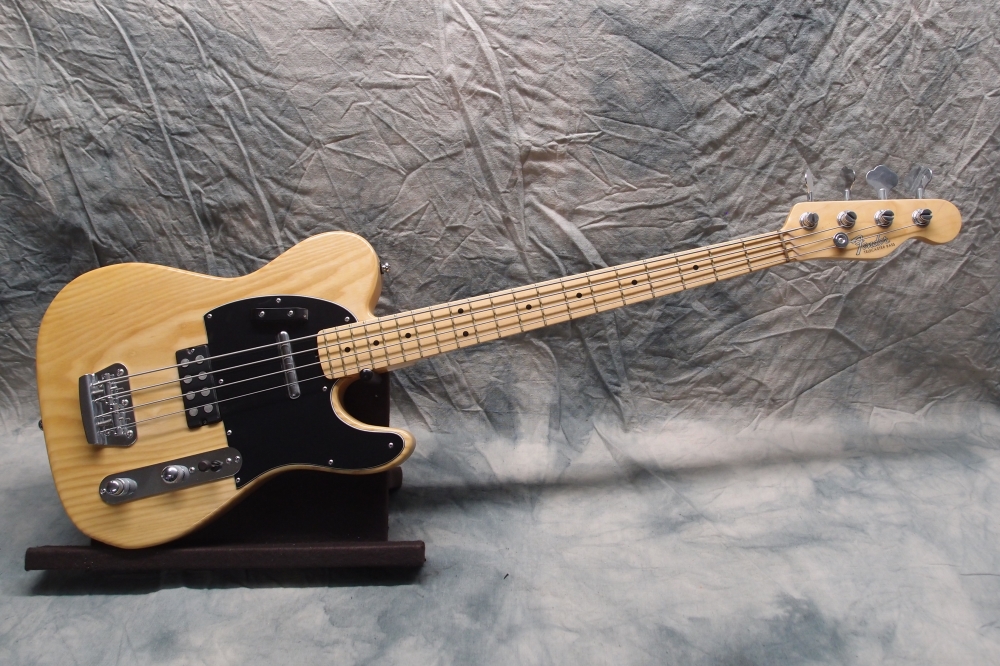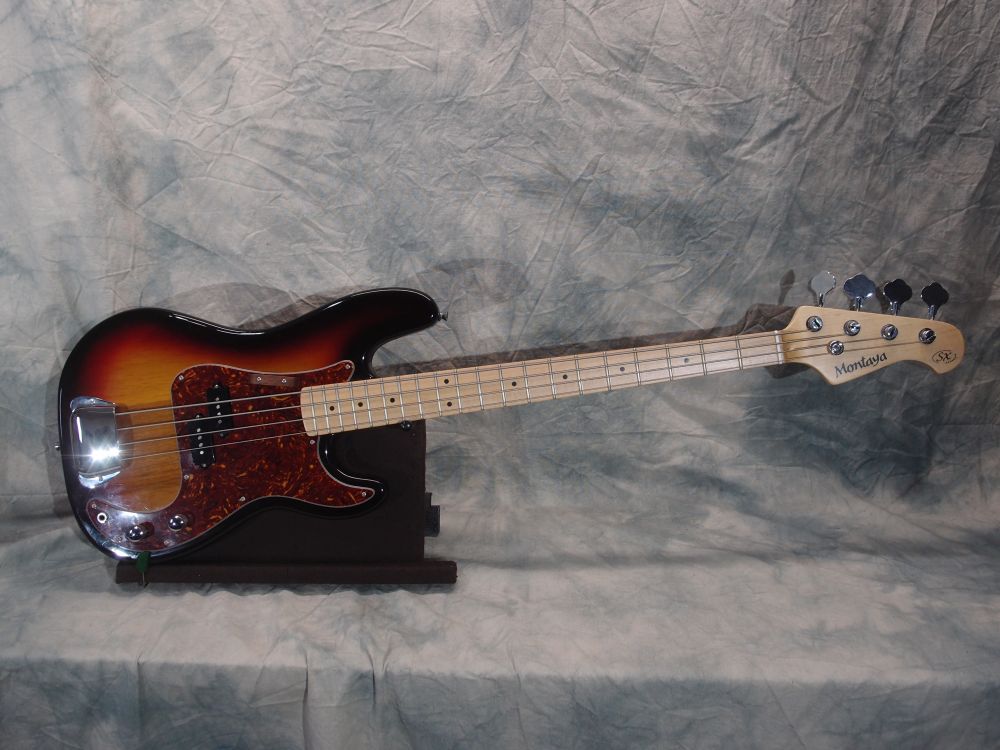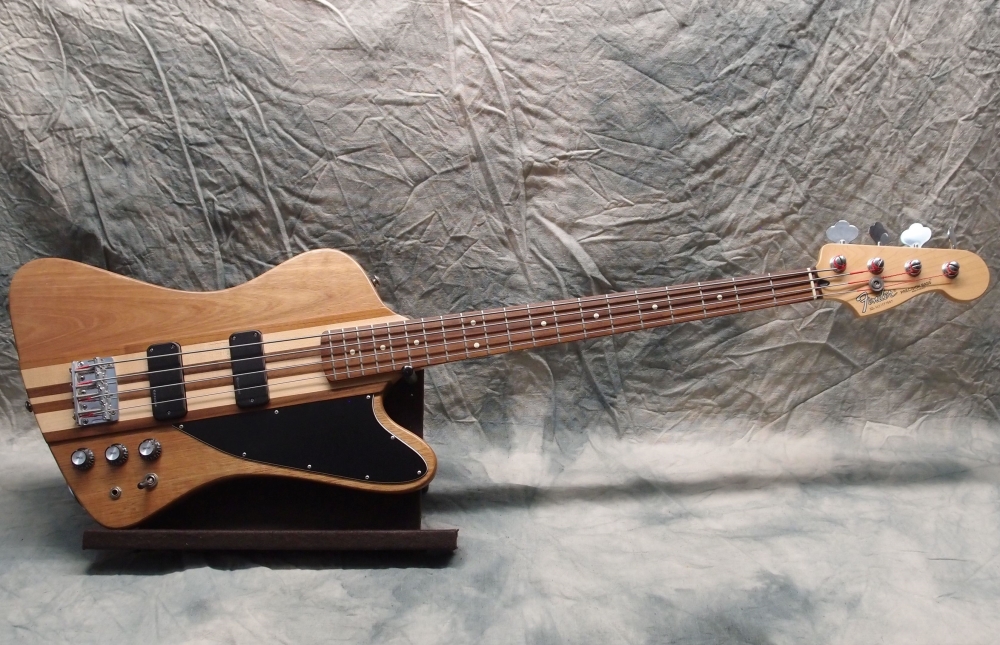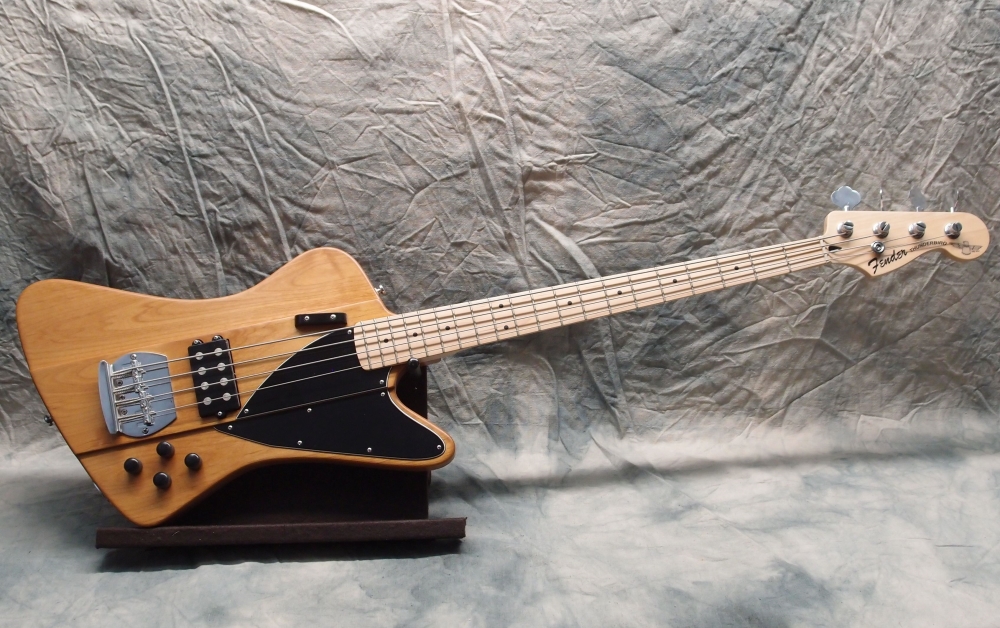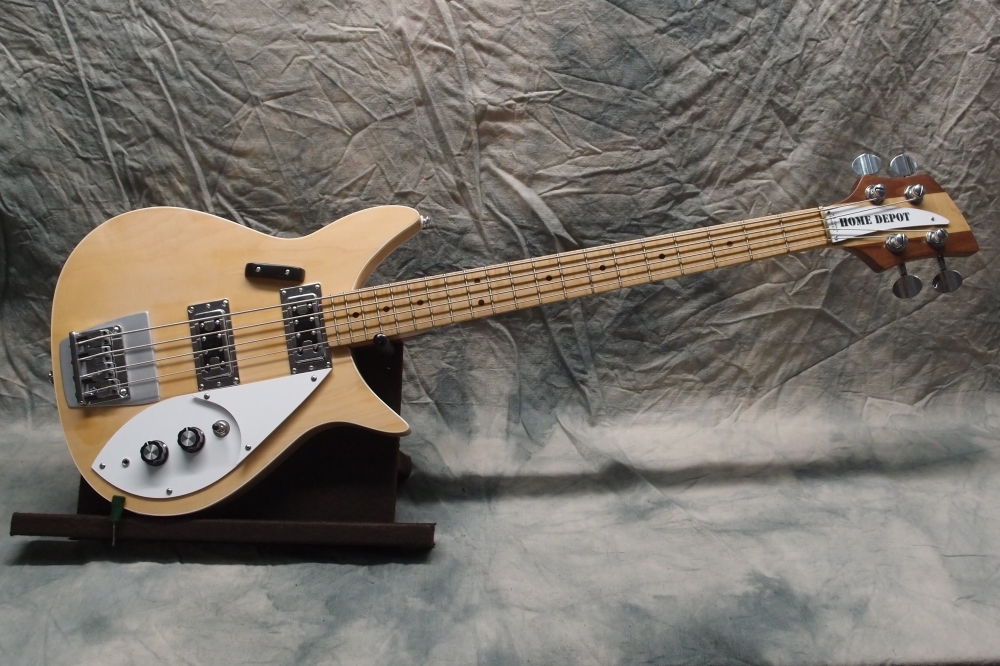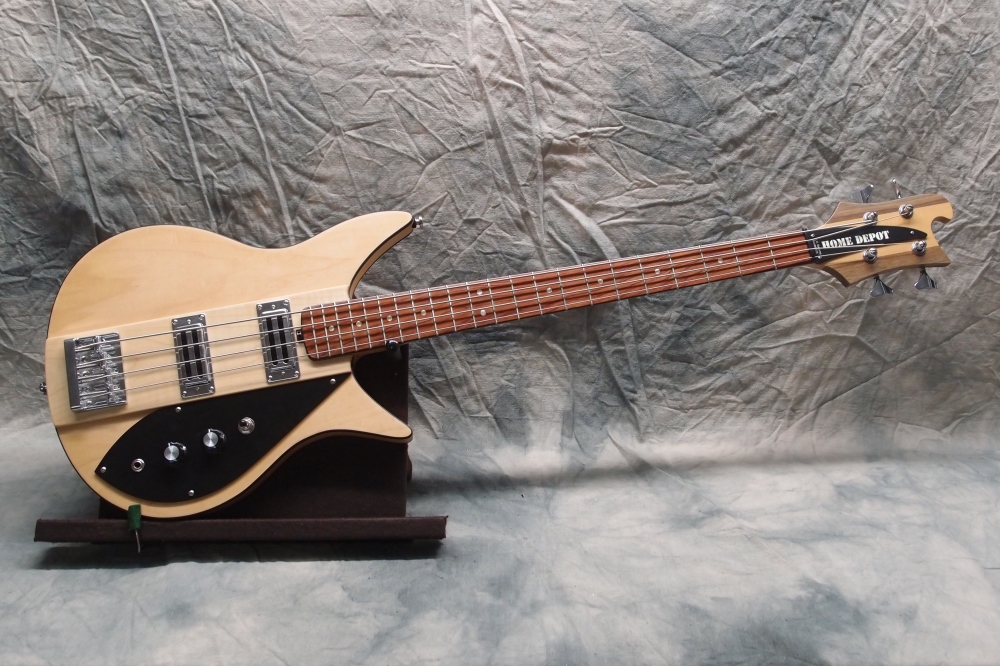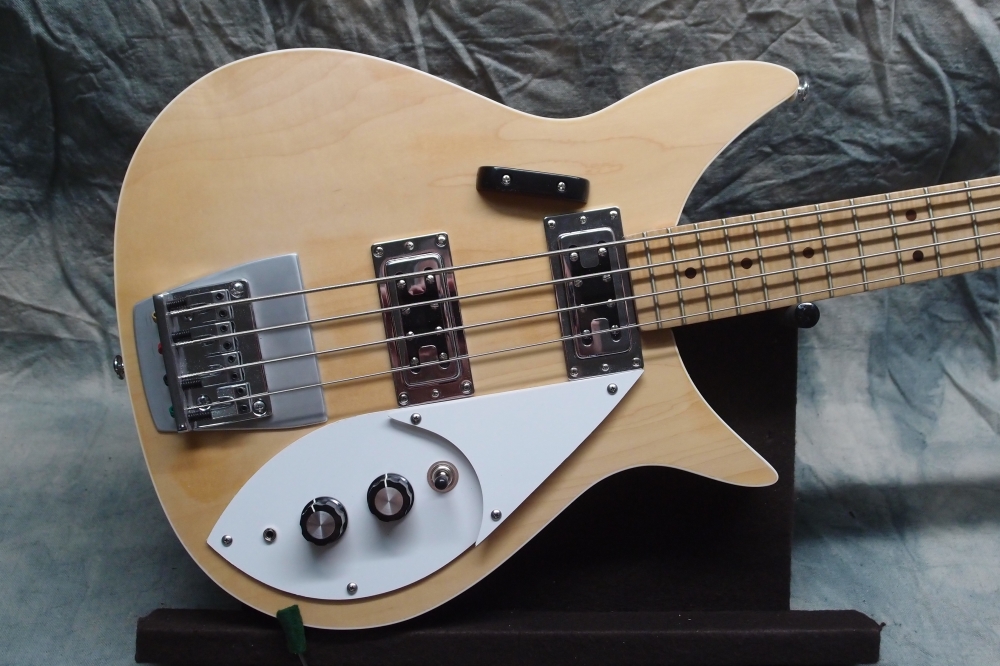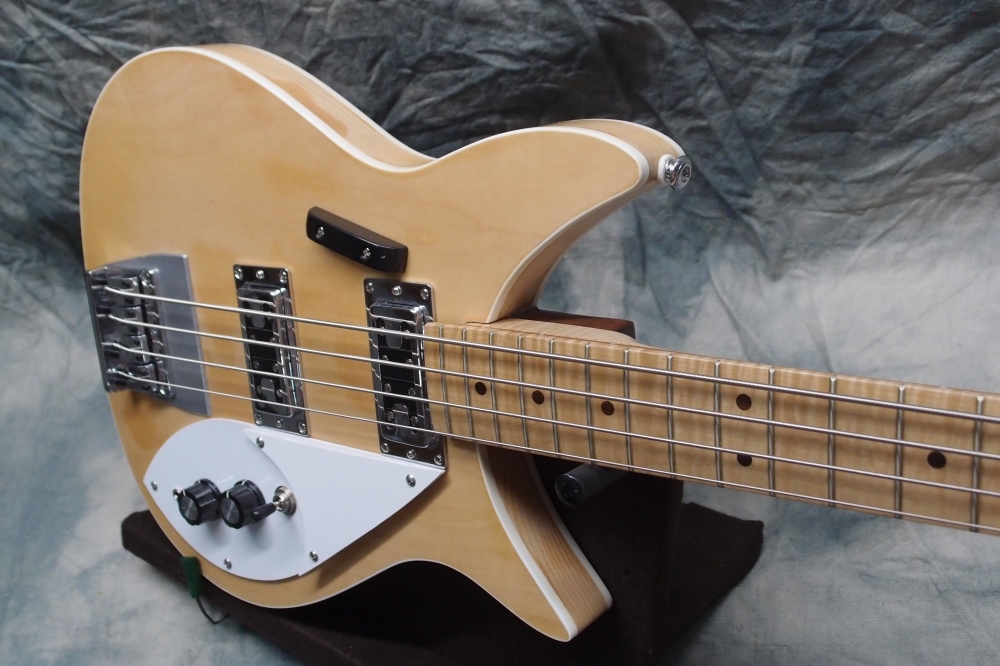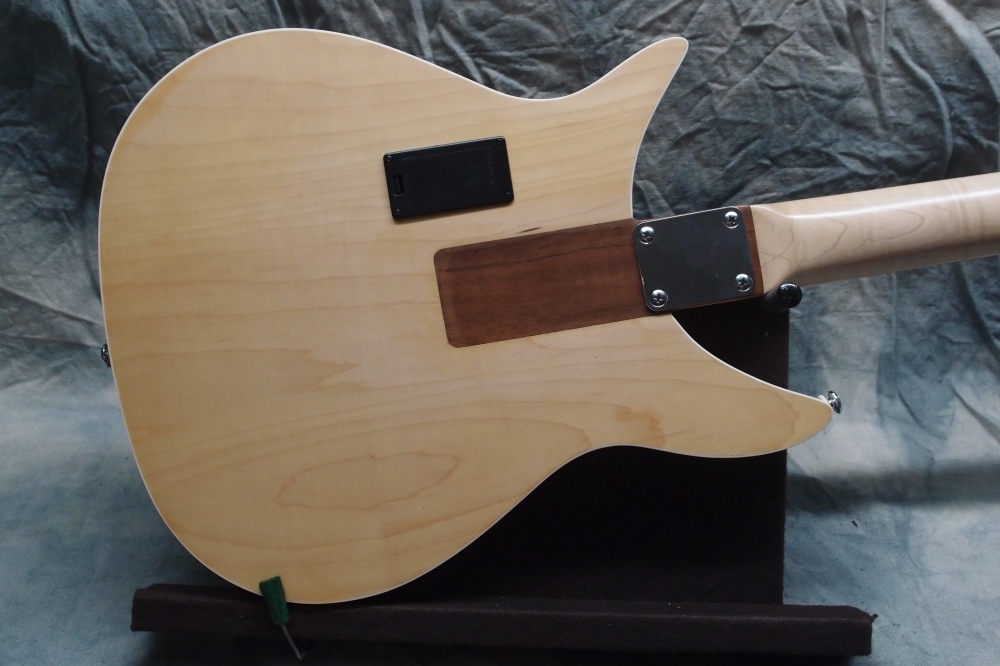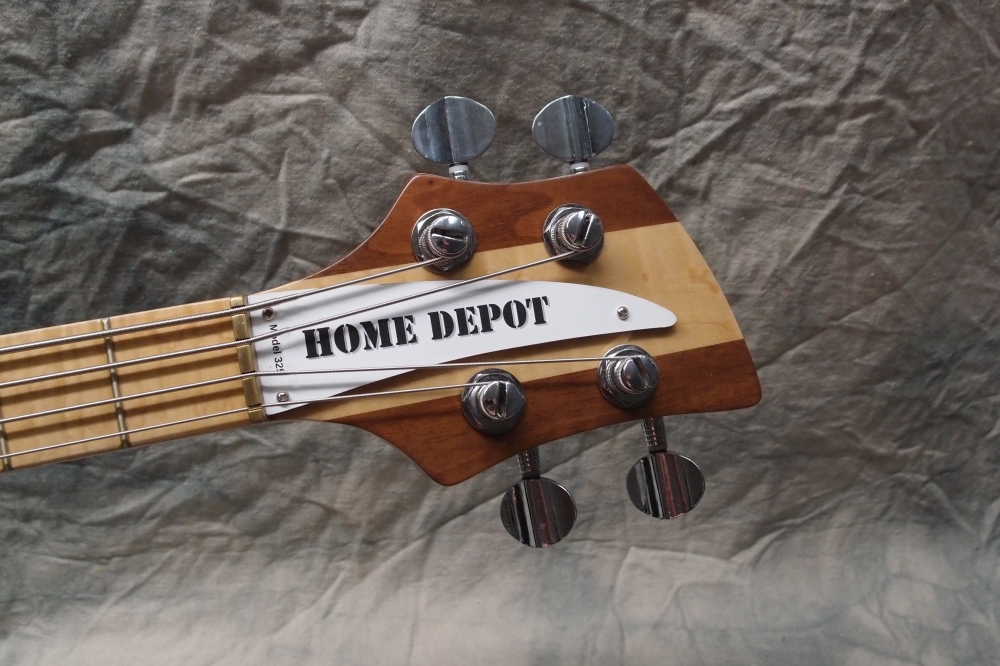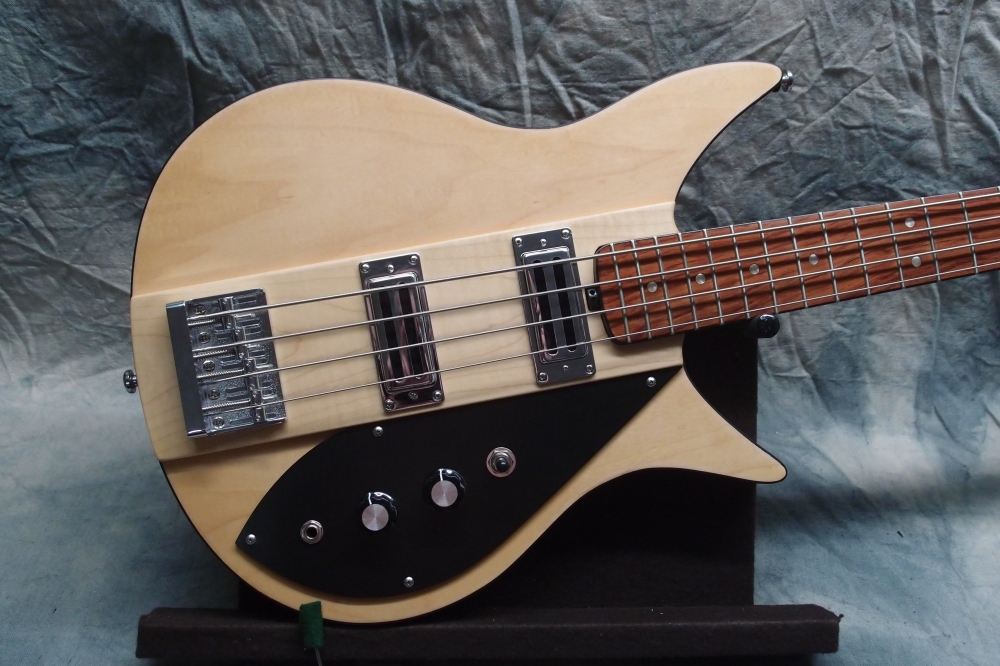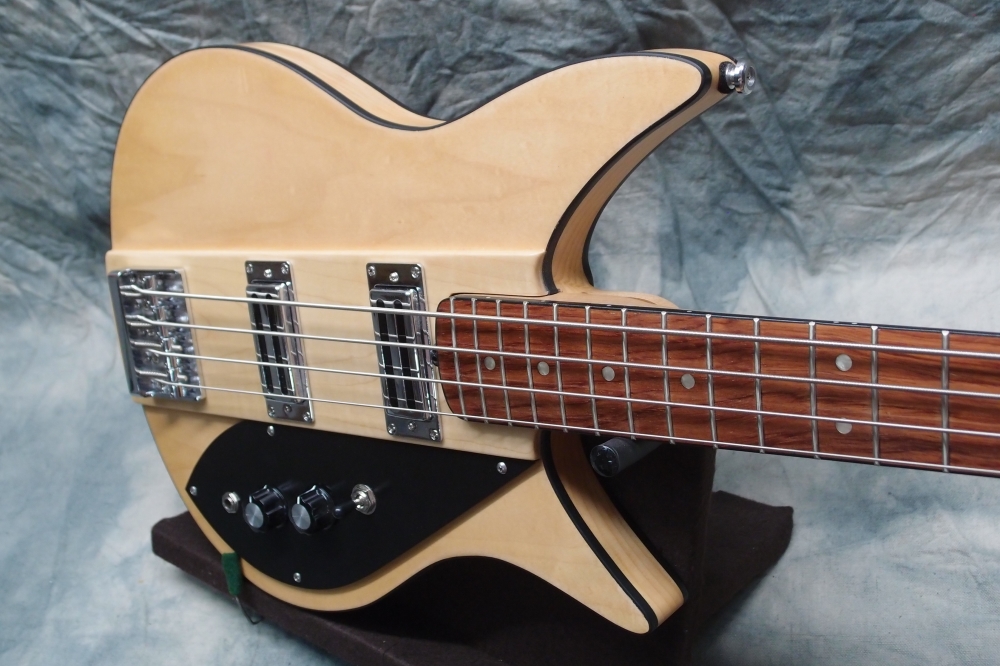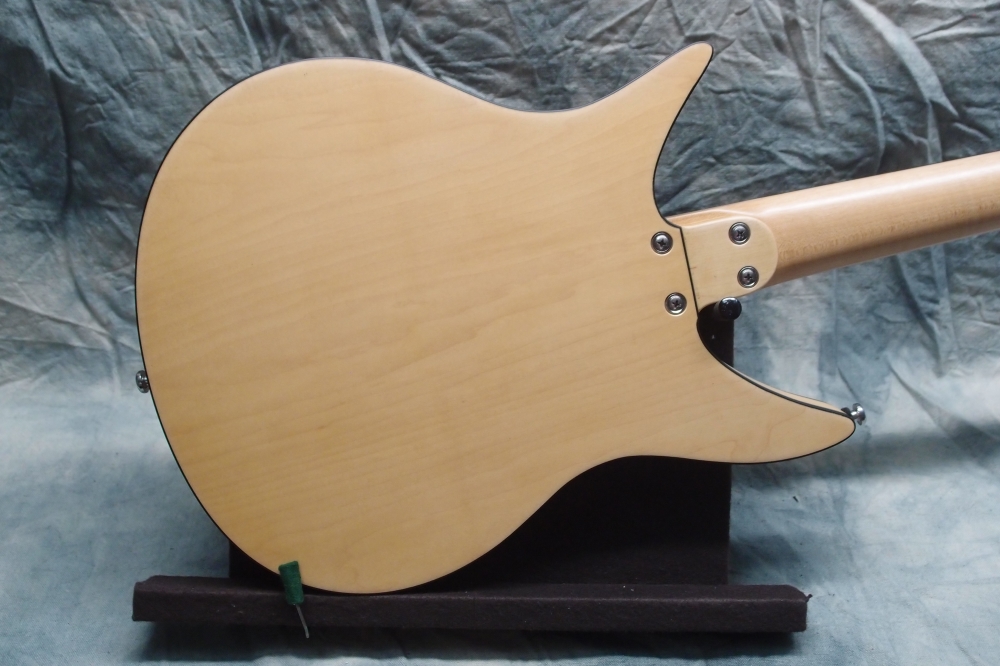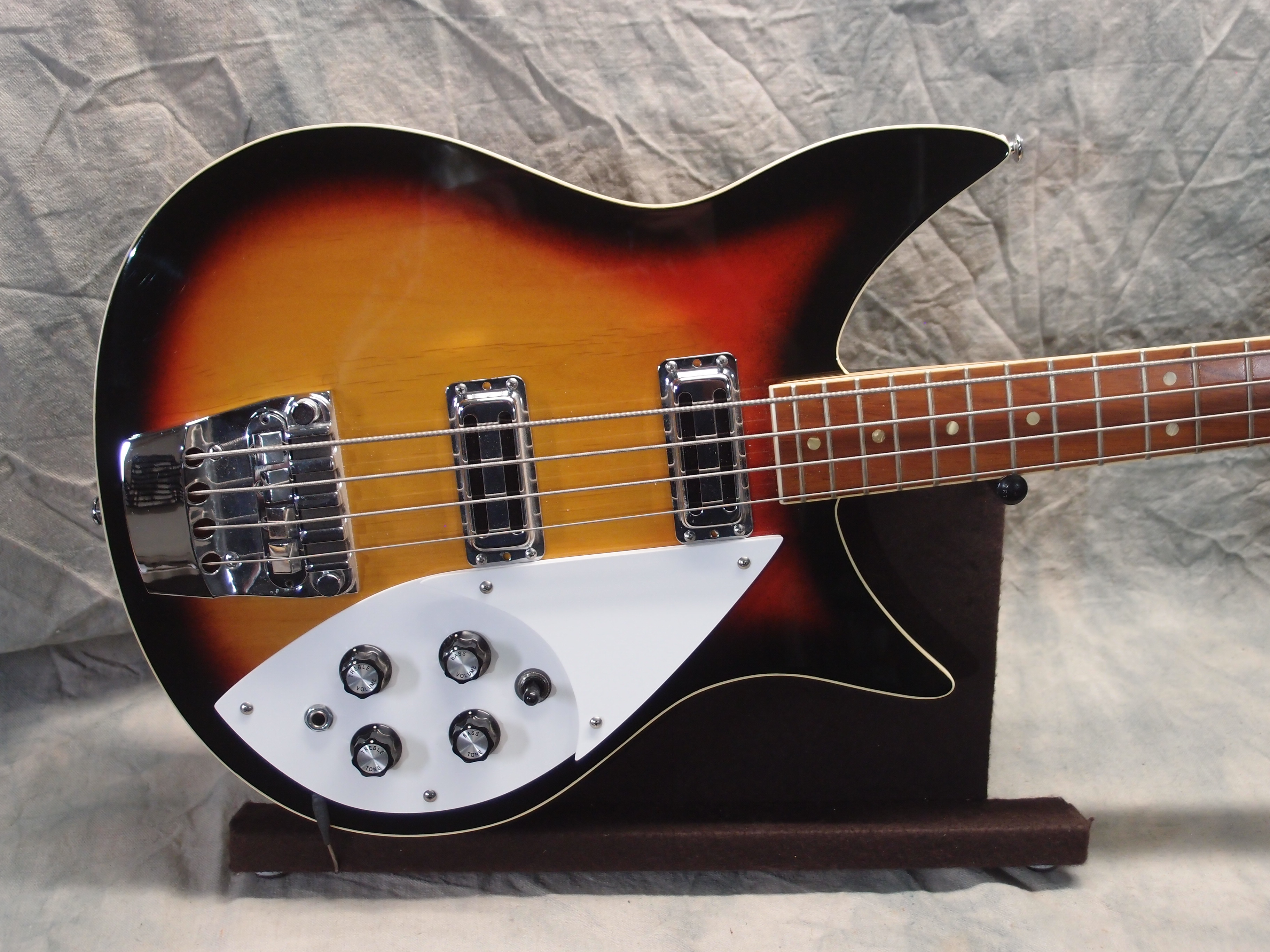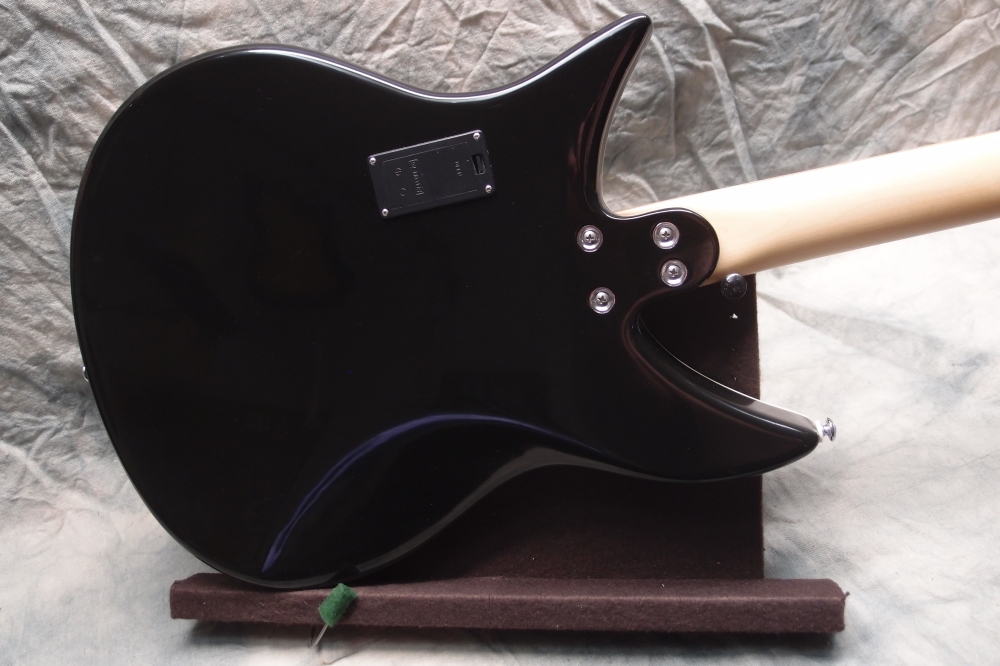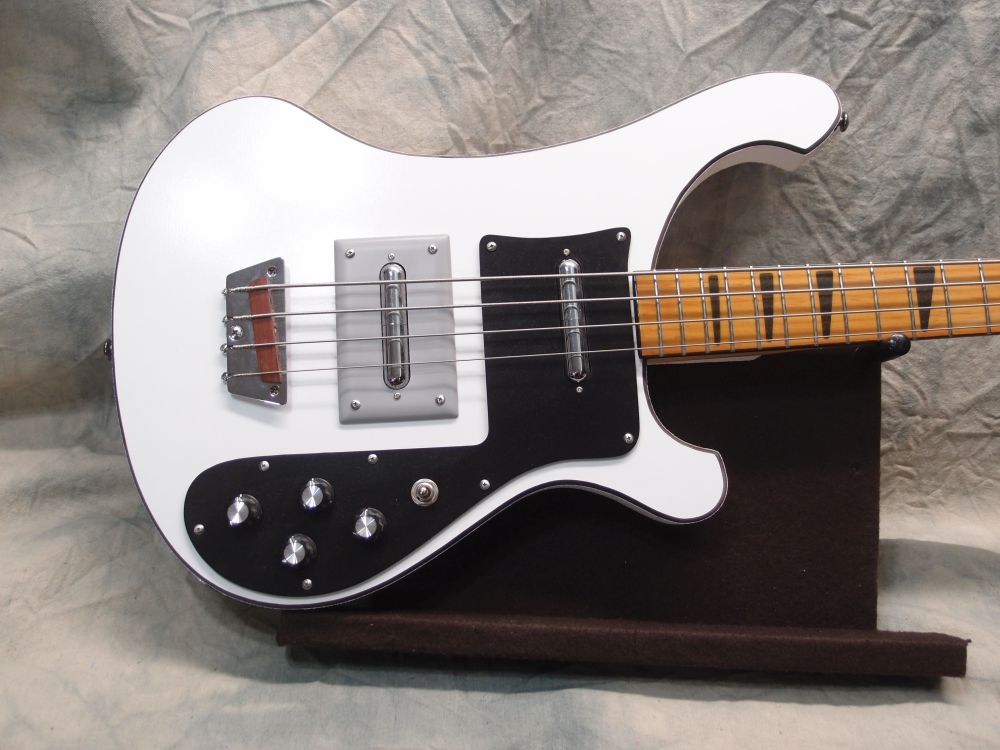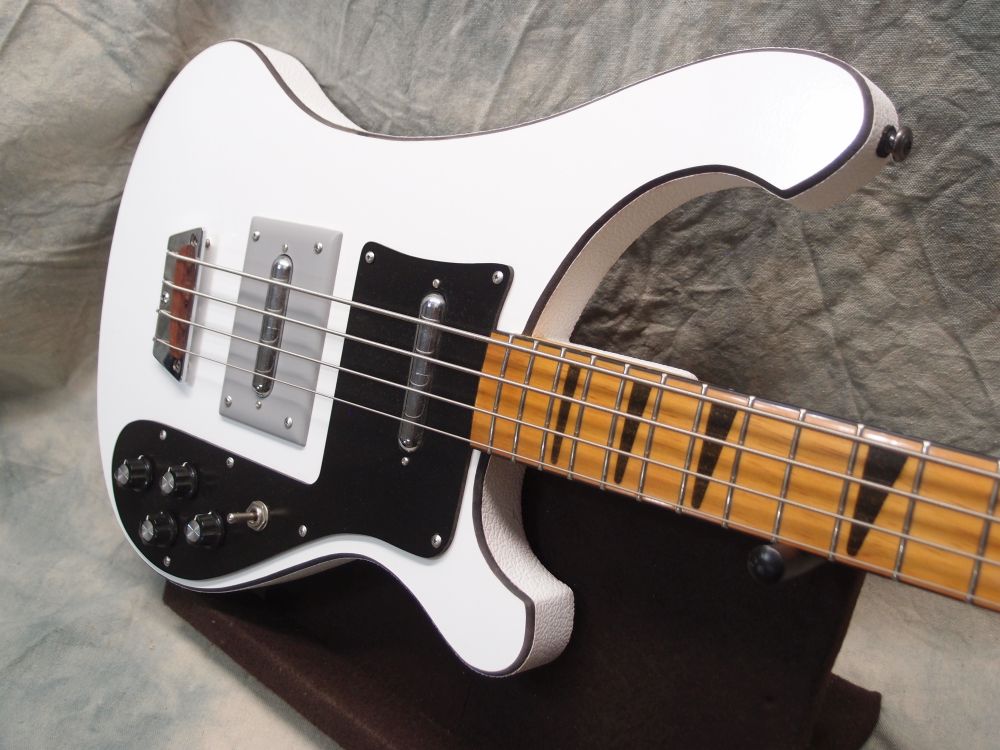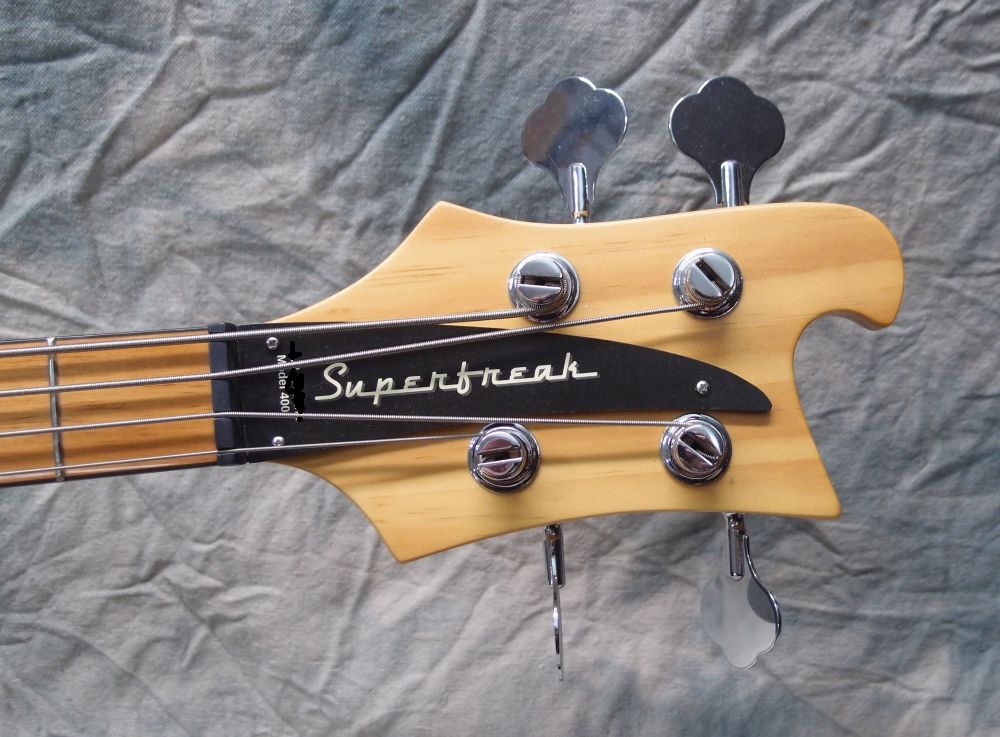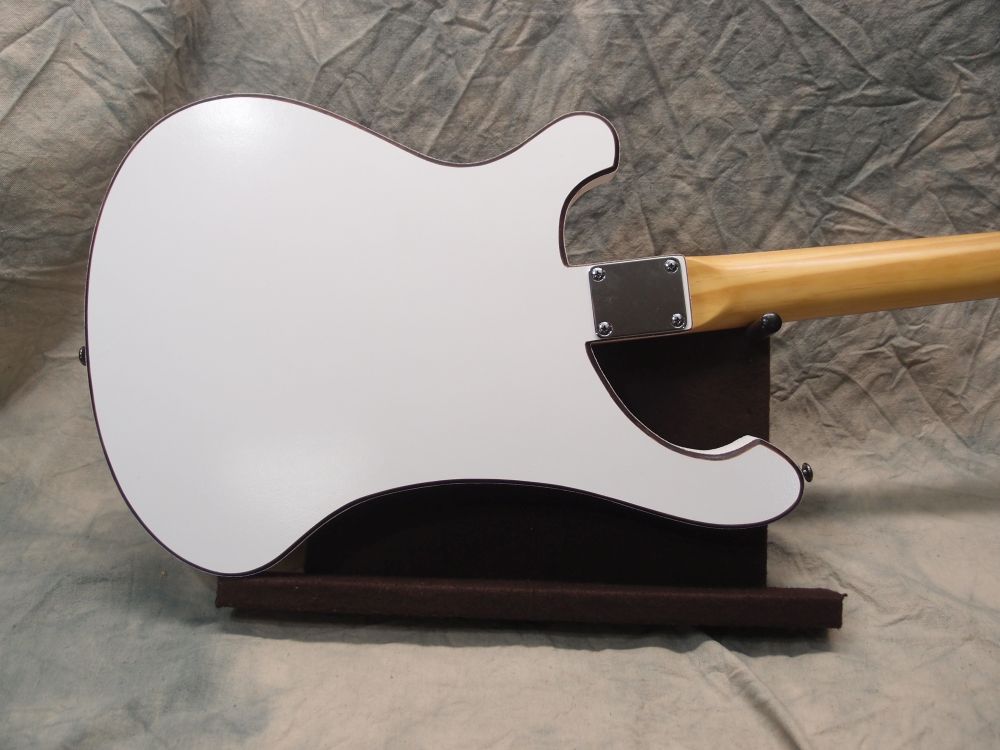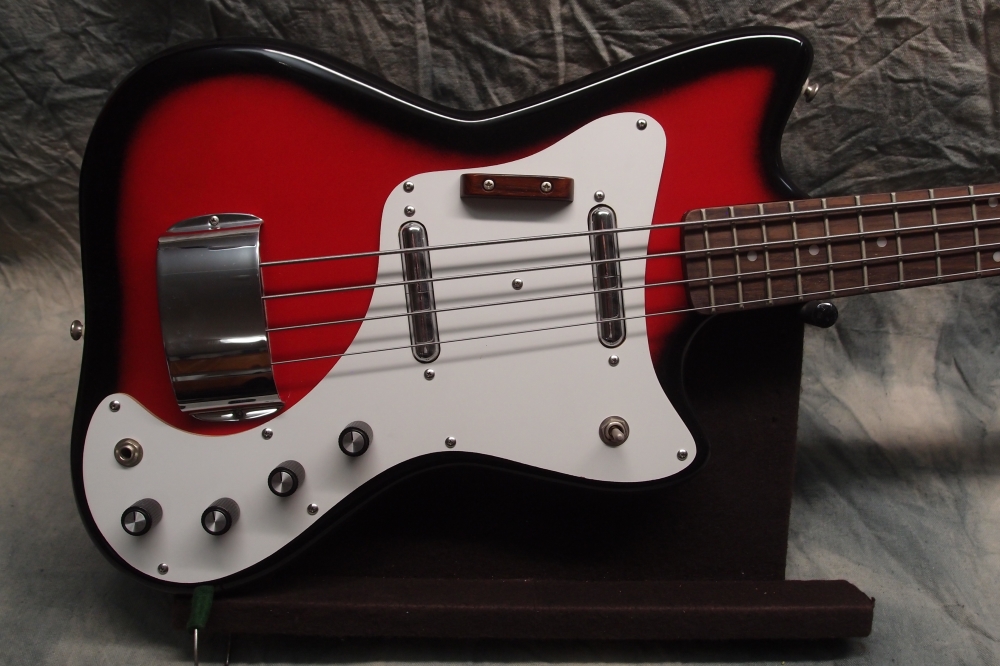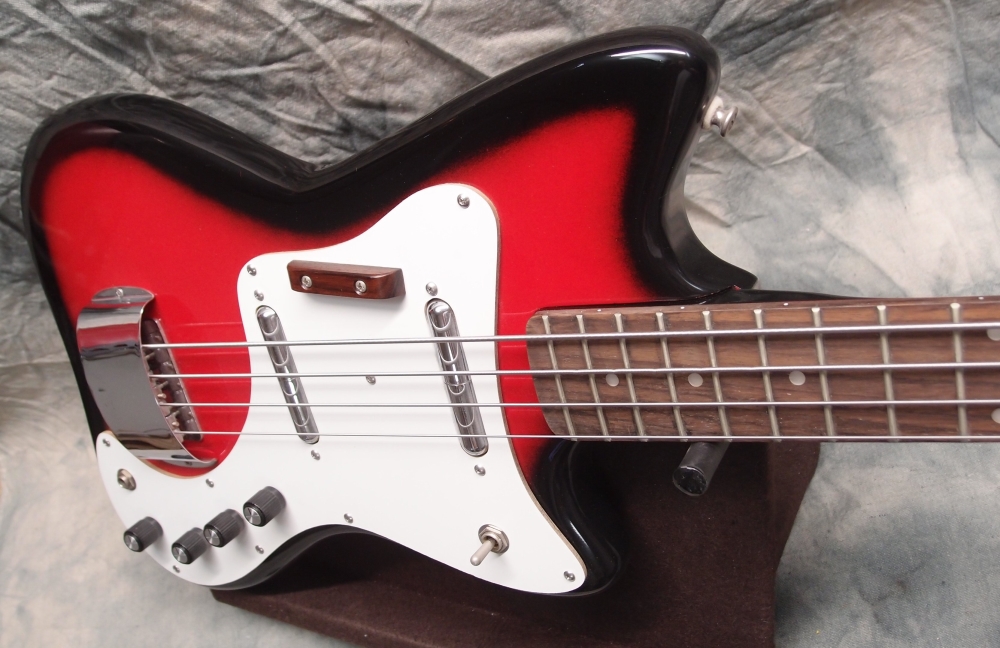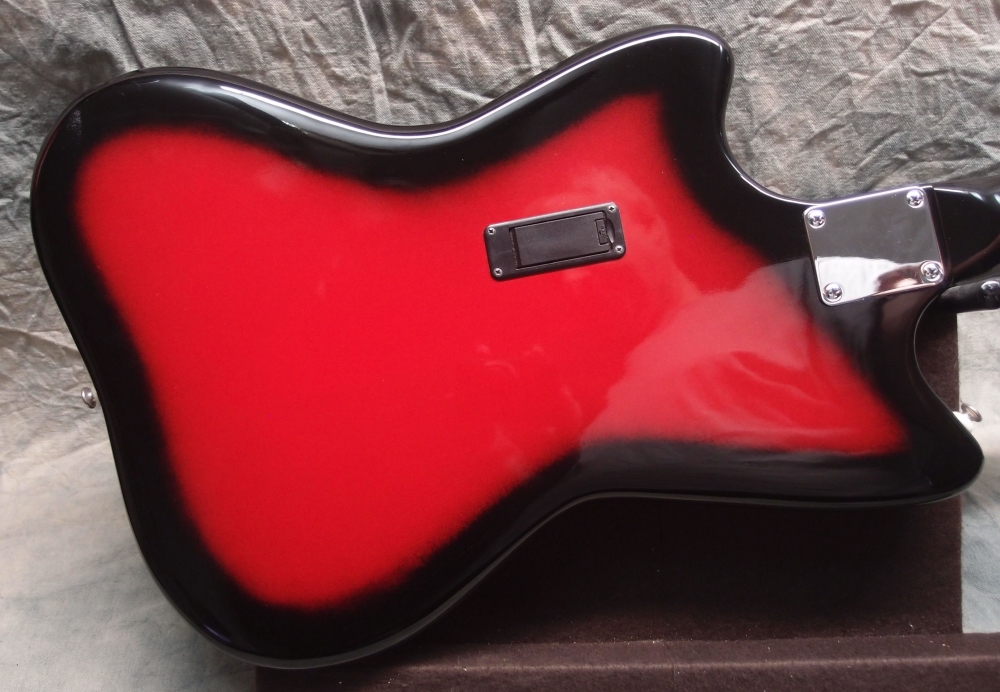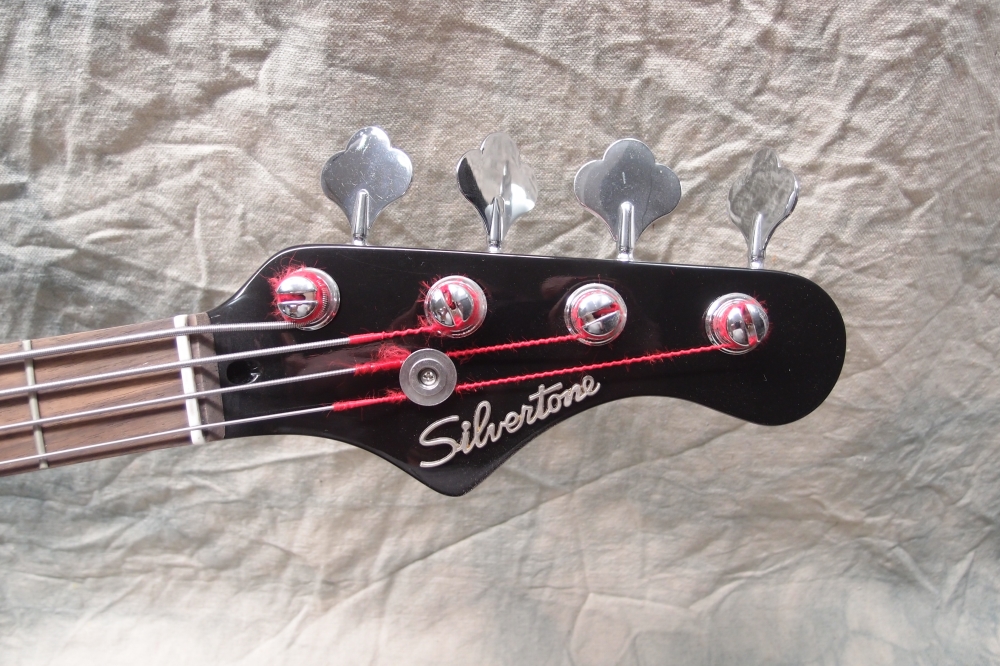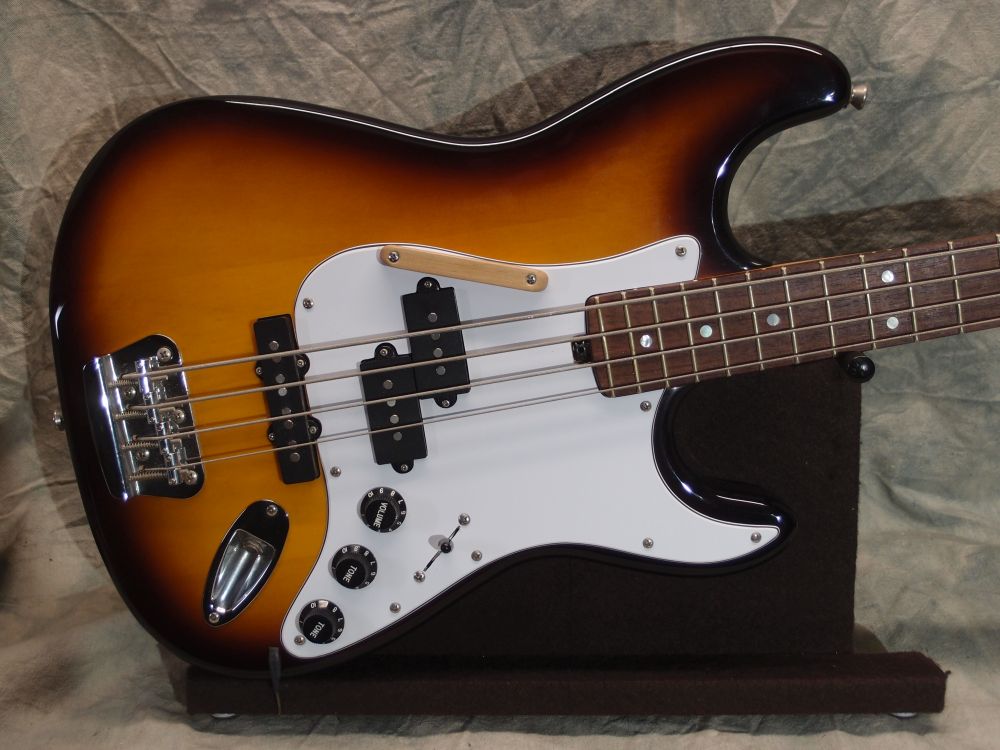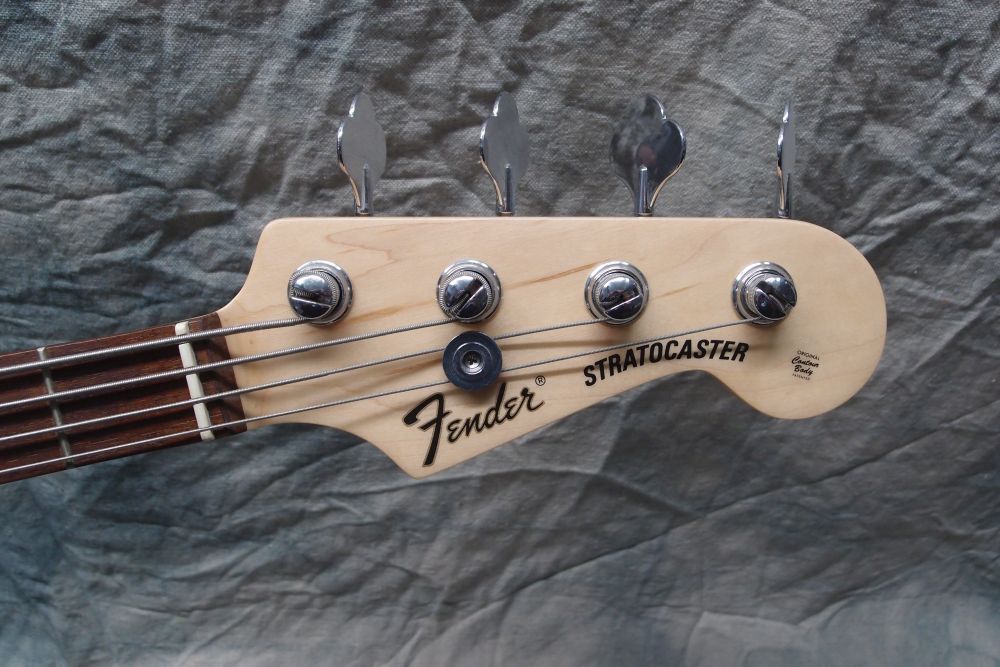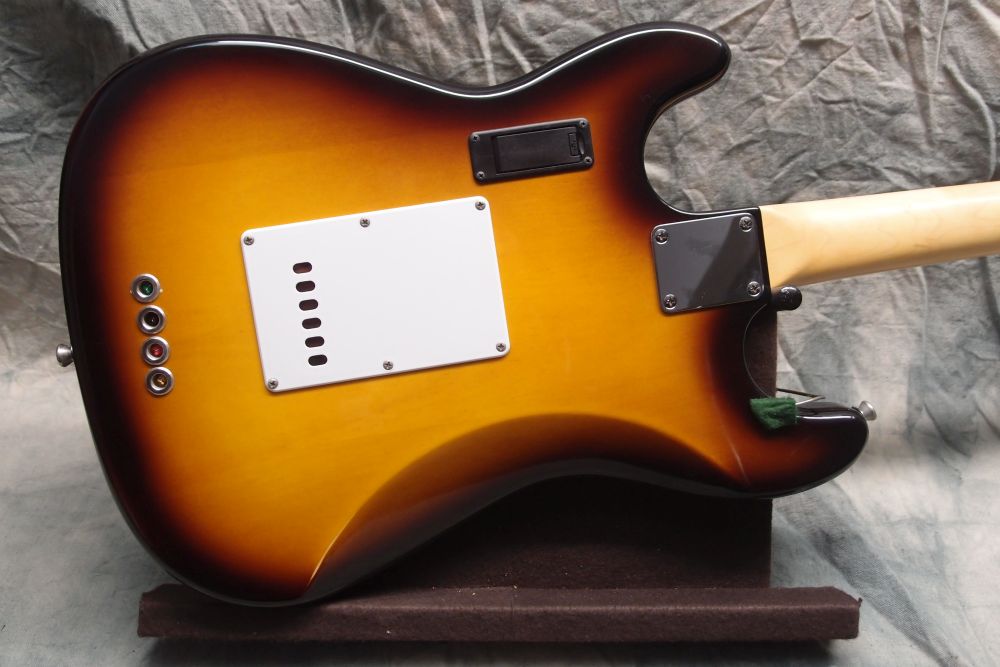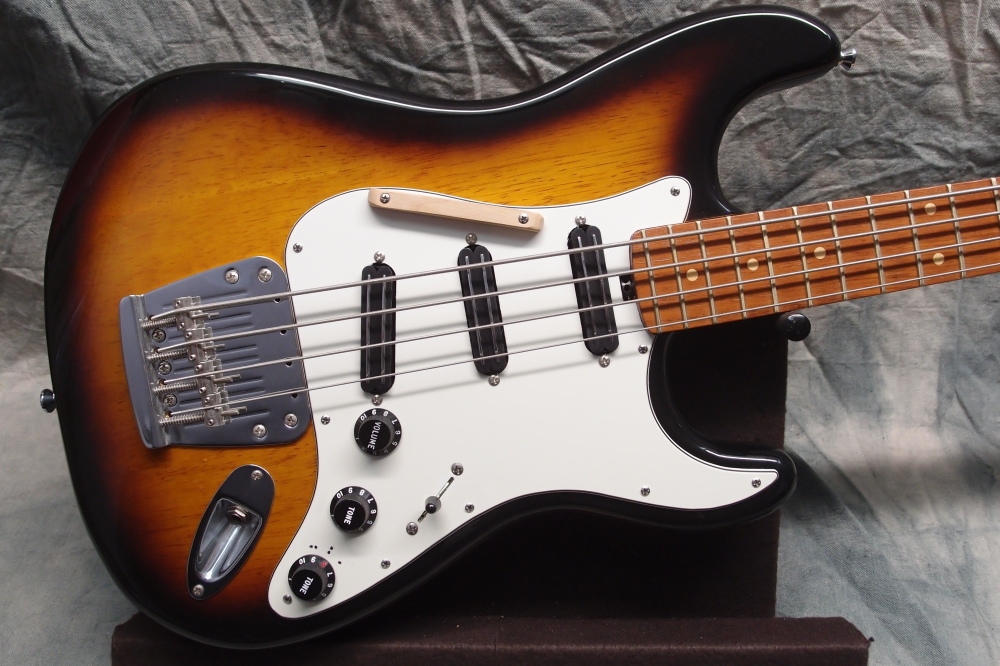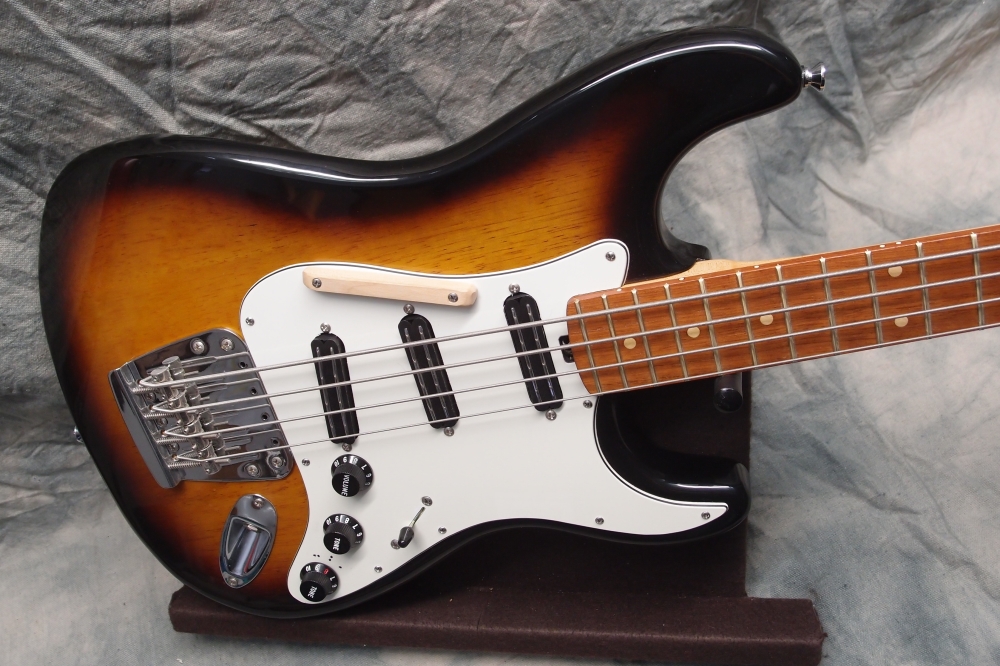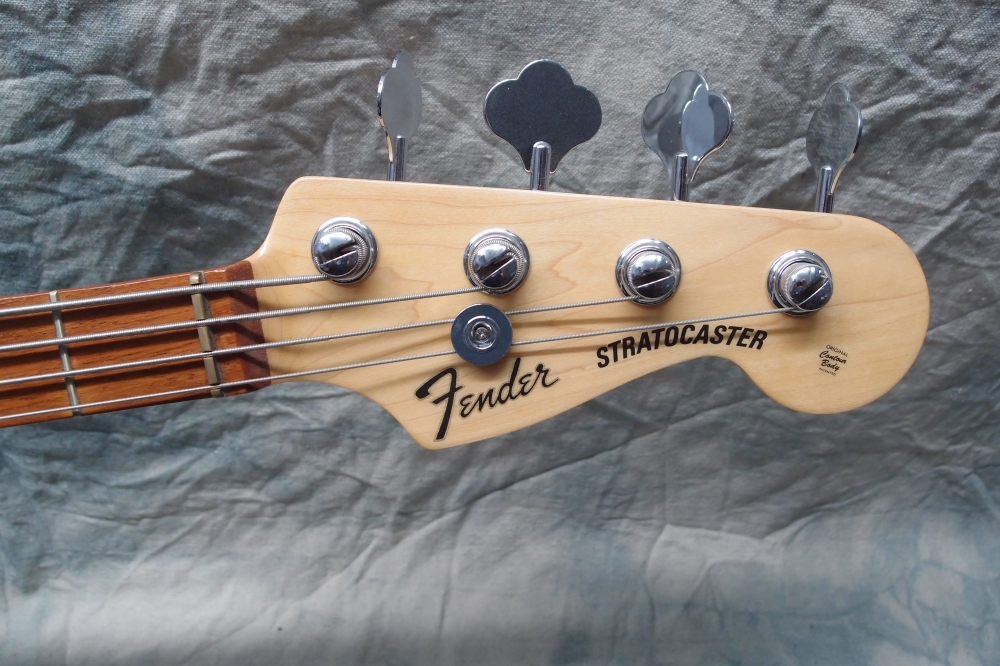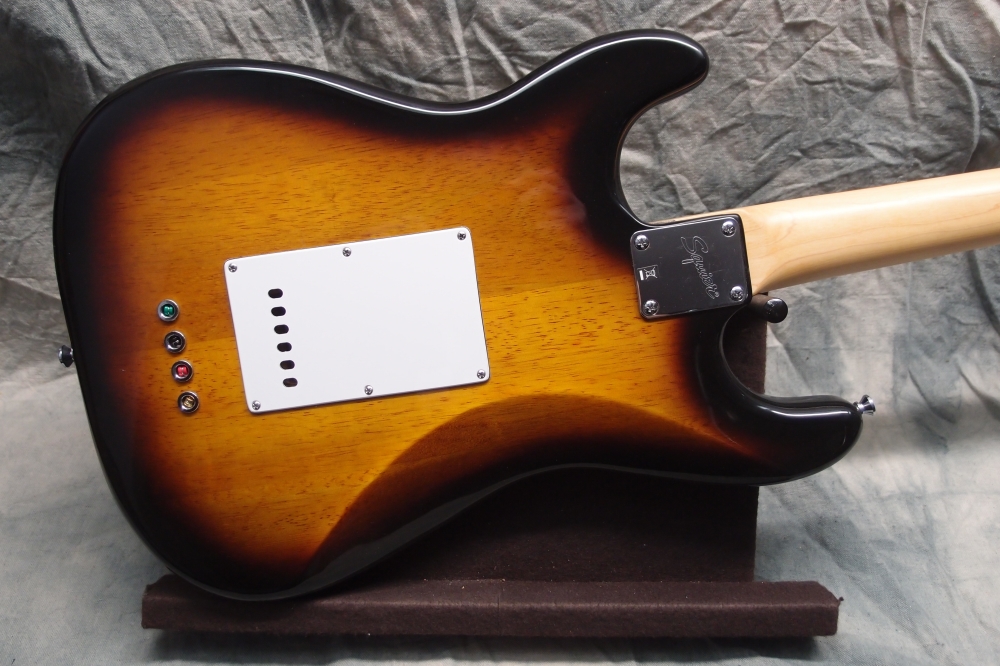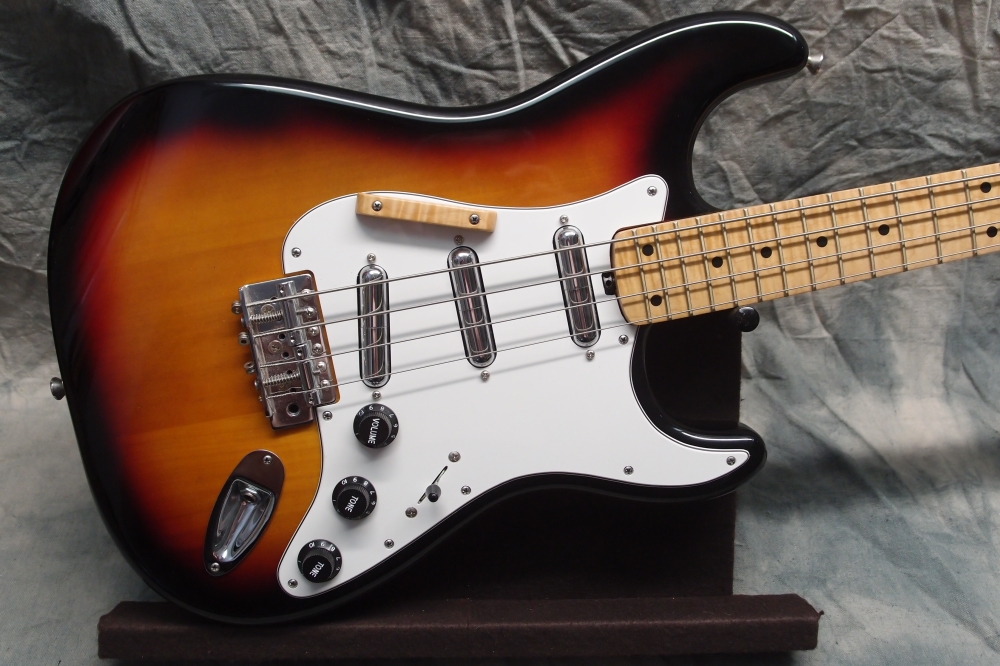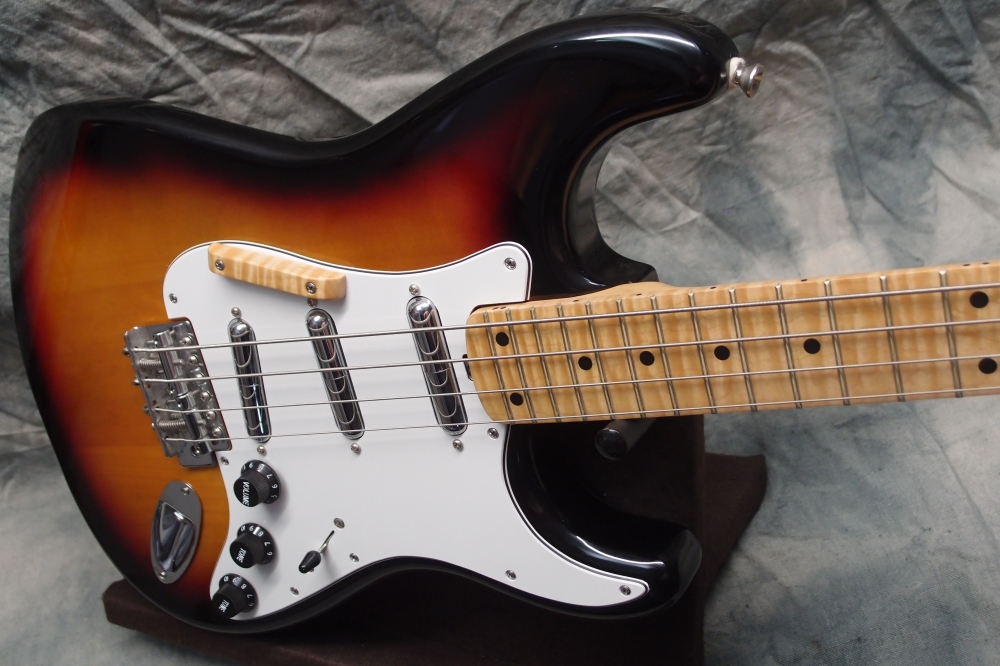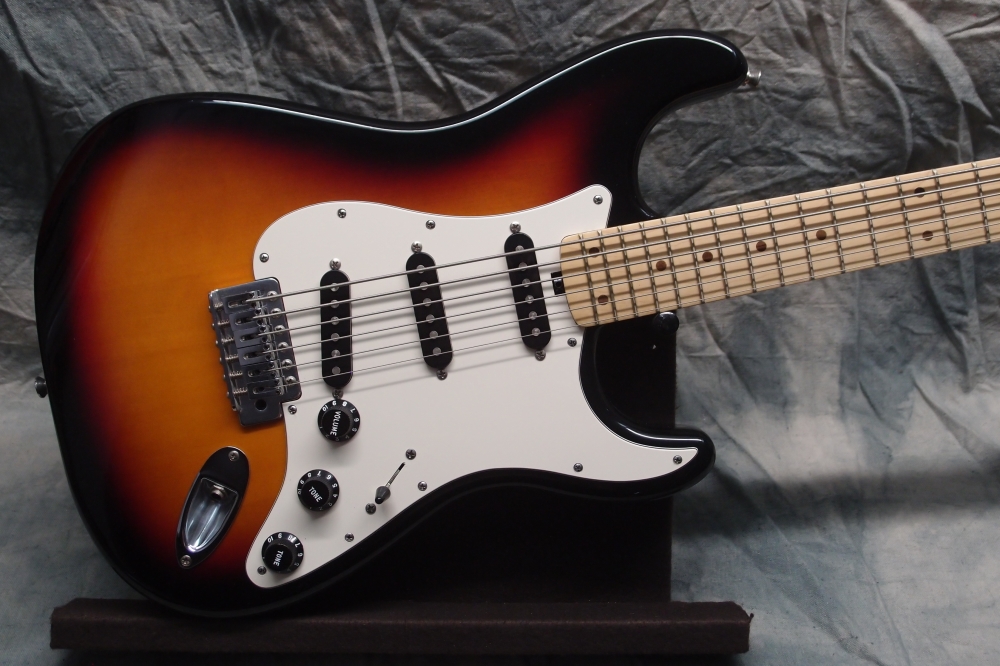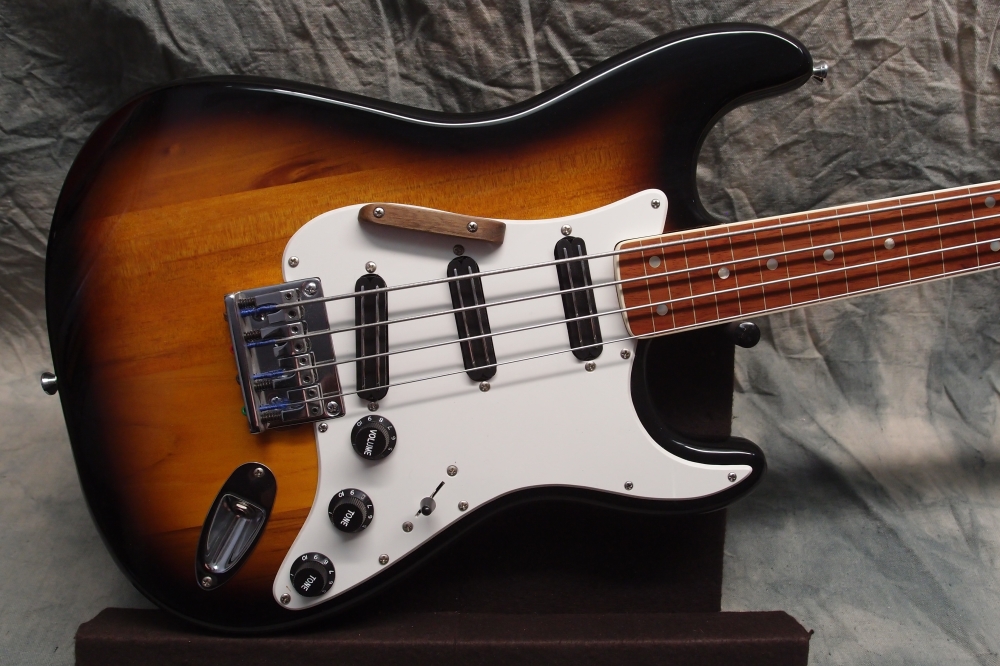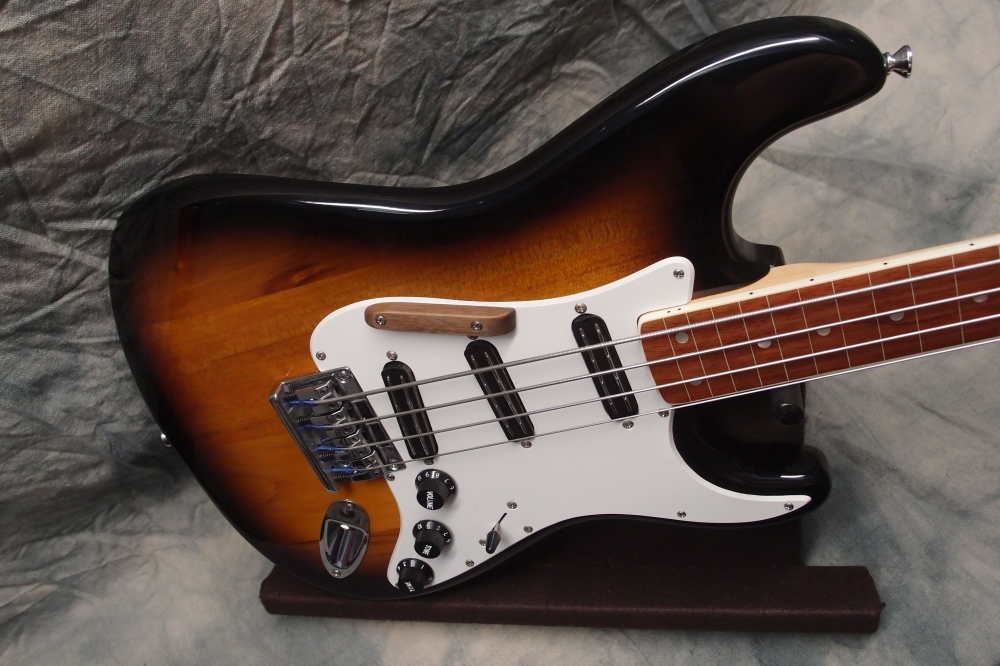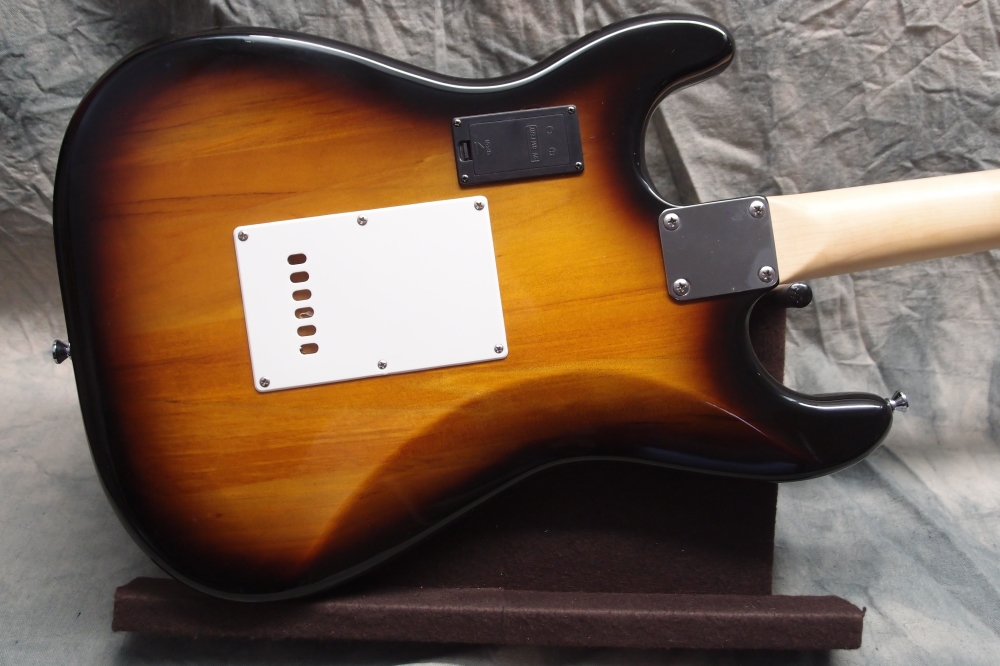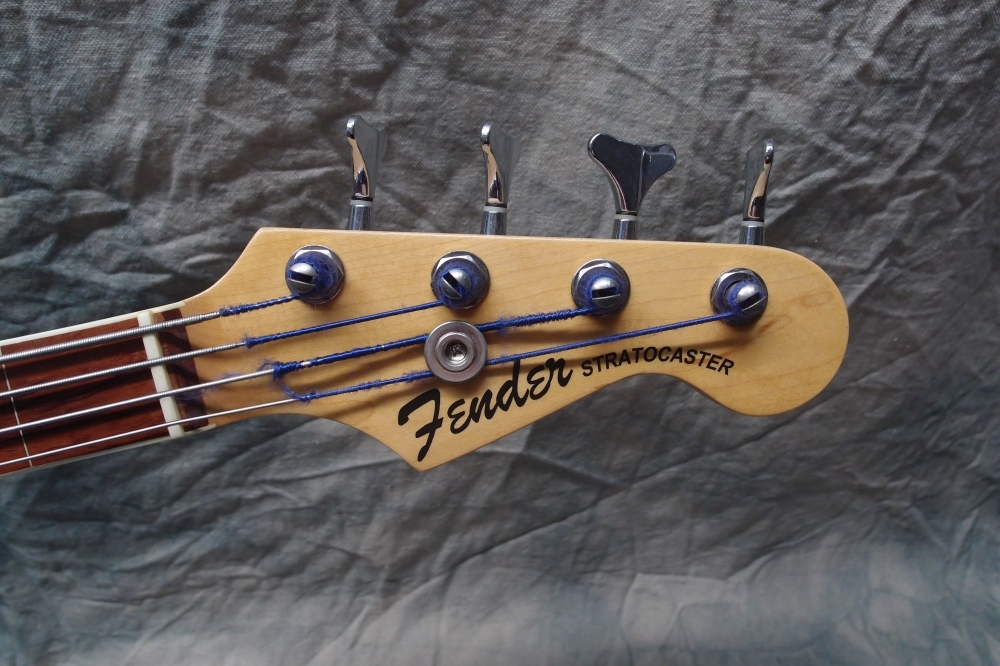These were my first two tries at a 325 bass. Both are plywood over pine hollow-bodies. The one on the left - #1 - used an experimental neck mounting that I didn't like. The one on the right - #2 - suffered a router mishap. I took all the good parts and built the solid-body, and both of these spent years on the scrap heap.
More: Rickenbacker 325 Bass 1 ...
These were my first two tries at a 325 bass. Both are plywood over pine hollow-bodies. The one on the left - #1 - used an experimental neck mounting that I didn't like. The one on the right - #2 - suffered a router mishap. I took all the good parts and built the solid-body, and both of these bodies spent years on the scrap heap.
More: Rickenbacker 325 Bass 2 ...
This was my third go at a 325 bass. The first one was unbalanced with this long neck, and the second suffered a router mishap. Eventually, I salvaged both of those, but first I took all the good parts and did this. Fender-type alder body with 3-tone sunburst, single binding. Surface-mounted pickups, active electronics. Finished entirely in polyurethane.
More: Rickenbacker 325 Bass 3 ...
This one is kind of a joke and an experiment in just how cheap you can build a guitar. The body is dry-erase board over plywood - no finish - with Tolex side binding. Dry-erase board is Masonite covered with Melamine. The neck is 100% Radiata pine, even the fretboard. The "inlays" are glitter and CA glue. The pickguard is the other side of the dry-erase board - 'chalkboard'. The pickup mount is a 57 cent switch plate.
More: Rickenbacker 4001 Bass 1 ...
Danelectro Silvertone 1443 Bass
This is a project that took a long time, mainly due to the lacquer sunburst, which took several tries to get right. In the end, I even 'bursted the back of the neck. While it looks like an old Silvertone, it is actually thoroughly modern inside. 90's Danelectro lipstick pickups - the good ones, wired in series with a selector switch like they should be.
More: Silvertone 1443 Bass ...
This body was purchased on eBay from a parted-out guitar. Might have been a Squier, I don't remember. It was in pretty good shape, and I gave it a good polishing. The neck is hand-made, one of my first. The back is hand-picked Home Depot maple, the fretboard is pre-slotted rosewood from StewMac, I hadn't yet worked out how to make my own. If you cut the first two frets off a 34" fretboard, you end up with a 30" scale. That's about the limit with a pre-slotted fretboard though, as you start to run out of frets at the other end. The dots are 1/4" pearl from StewMac, expensive. The frets are probably pre-cut Fender.
More: Stratocaster Bass 1 ...
This Strat bass is another of my early projects, an evolution of the first one. It uses basically the same neck, but mounted in the stock guitar neck pocket. This moves the bridge position adjacent to the old tremolo hole, but the expansive Mustang bridge plate covers it nicely. The pickguard looks stock, but is actually custom-made to cover the six stock bridge screw holes. If you can't get a Mustang bridge ( and you can't any more, ) you could extend the pickguard to cover all the guitar holes, or use a stock pickguard and just make a small bridge-sized cover. Or just leave the tremolo hole and keep your stash in it.
More: Stratocaster Bass 2 ...
Uses the bottom four strings of a Bass VI set to get a low enough total string tension for the Strat tremolo to work.
More: Stratocaster Bass IV ...
The Fender Bass VI was a bass for guitarists. It was basically a Jazzmaster body with a 30" short-scale bass neck and six mid-weight strings tuned EADGBE one octave below a guitar, or the same as a bass. The string spacing is such that it can only be played with a pick. You can look up the rest of the details. Danelectro actually invented the Bass VI, they were always willing to try new things while Fender and Gibson were just determined to deepen the rut they were in. Rickenbacker's rut is so deep they can't even see out of it.
More: Stratocaster Bass VI ...
This fretless sounds really cool, and is super-easy to play, as you no longer have to stretch your hand unnaturally just to make ordinary patterns. It is set up with flats I found in the junk box. Can anyone tell me what kind of strings have blue thread leaders? The intonation fell right in, which is surprising considering the bridge was previously set up for 25.5" guitar strings. ( Actually, how important is intonation on a fretless anyway? )
More: Stratocaster Fretless Bass ...




